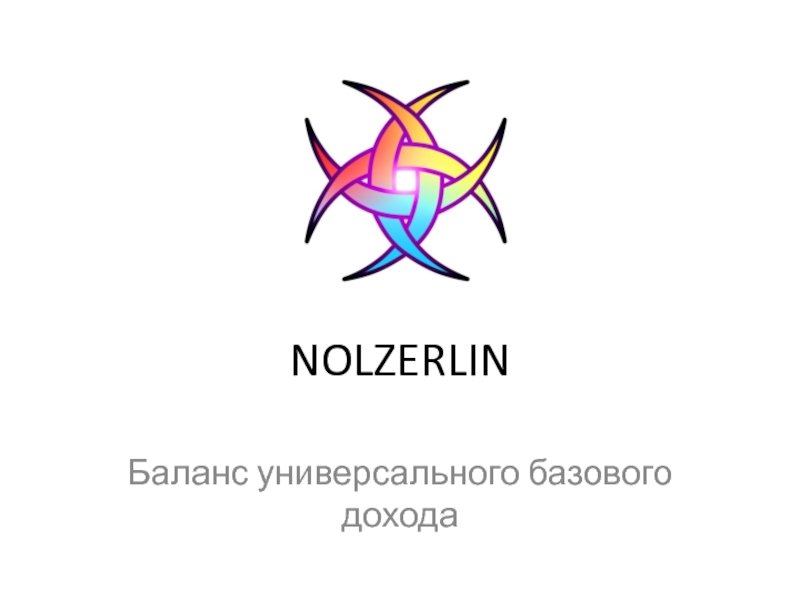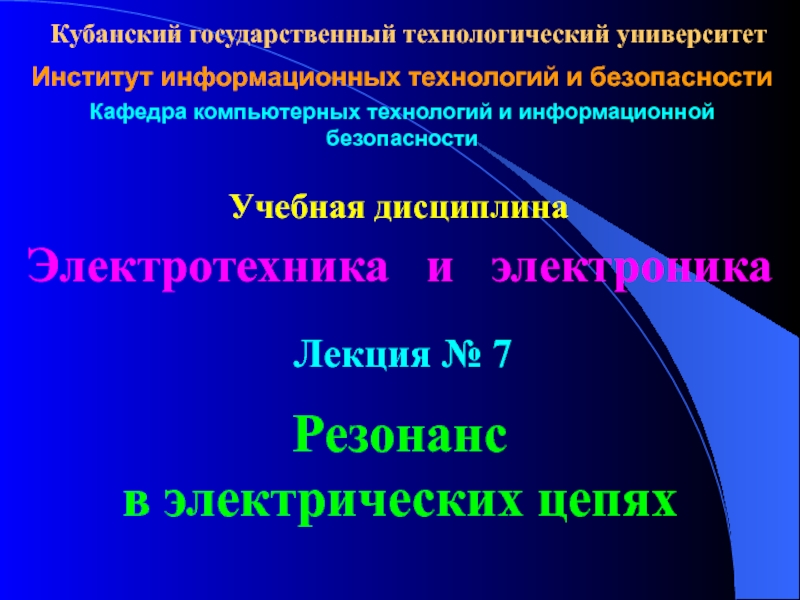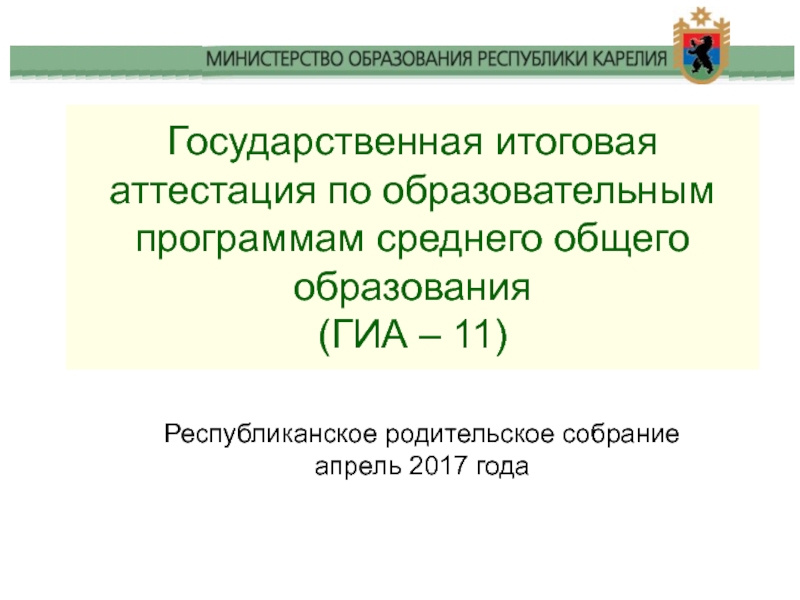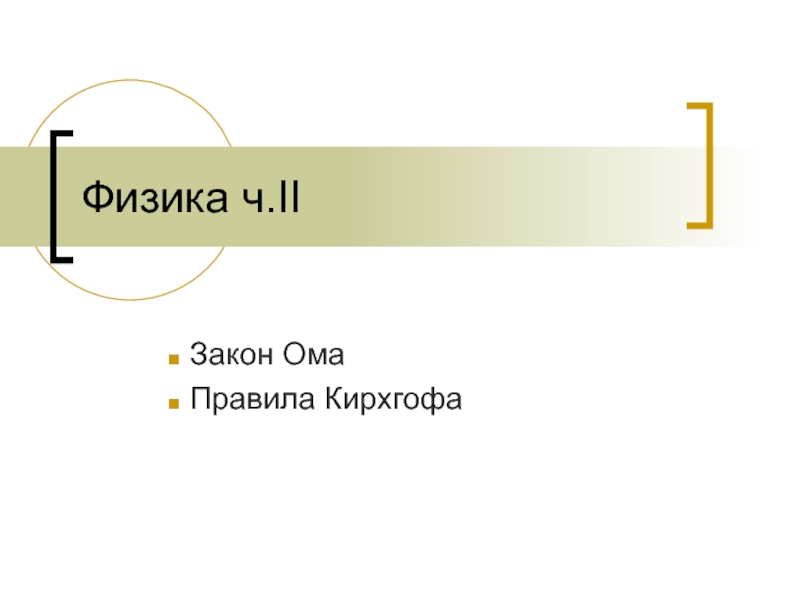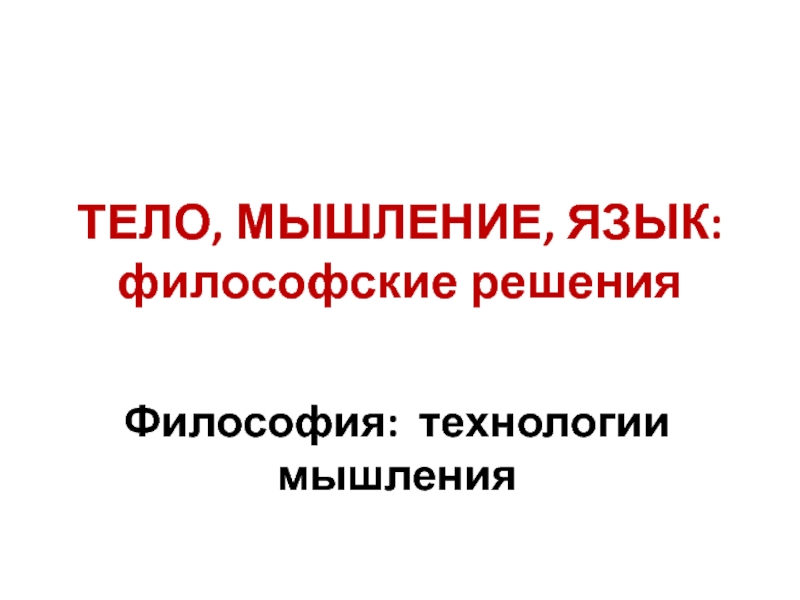Слайд 2Overview: Reconnaissance, Recognition, and Response
Barriers help an animal to defend
itself from the many dangerous pathogens it may encounter.
The
immune system recognizes foreign bodies = “not self” and responds with the production of immune cells and proteins.
Two major kinds of defense have evolved: innate immunity and acquired immunity.
Слайд 3How do immune cells of animals recognize foreign cells?
1.5
Слайд 4Innate immunity is present before any exposure to pathogens and
is effective from the time of birth.
It involves nonspecific responses
to pathogens.
Innate immunity consists of external barriers plus internal cellular and chemical defenses.
Слайд 5Acquired immunity = adaptive immunity, develops after exposure to agents
such as microbes, toxins, or other foreign substances.
It involves a
very specific response to pathogens.
Слайд 6 Animal Immunity
INNATE IMMUNITY
Recognition of traits
shared by broad ranges
of
pathogens, using a
small set of receptors
Non-specific
•
•
Rapid response
•
Recognition of traits
specific to
particular
pathogens, using a vast
array of receptors
•
Slower response
ACQUIRED IMMUNITY
Pathogens
(microorganisms
and viruses)
Barrier defenses:
Skin
Mucous membranes
Secretions
Internal defenses:
Phagocytic cells
Antimicrobial proteins
Inflammatory response
Natural killer cells
Humoral response:
Antibodies defend against
infection in body fluids.
Cell-mediated response:
Cytotoxic lymphocytes defend
against infection in body cells.
Слайд 7For Innate Immunity, recognition and response rely on shared traits
of pathogens
Both invertebrates and vertebrates depend on innate immunity to
fight infection. Vertebrates also develop acquired immune defenses.
The immune system recognizes bacteria and fungi by structures on their cell walls.
An immune response varies with the class of pathogen encountered.
Слайд 8Innate Immunity of Invertebrates
In insects, an exoskeleton made of chitin
forms the first barrier to pathogens.
The digestive system is protected
by low pH and lysozyme, an enzyme that digests microbial cell walls.
Hemocytes circulate within hemolymph and carry out phagocytosis, the ingestion and digestion of foreign substances including bacteria.
Hemocytes also secrete antimicrobial peptides that disrupt the plasma membranes of bacteria.
Слайд 9
Phagocytosis
Microbes
PHAGOCYTIC CELL
Vacuole
Lysosome
Containing
hydrolytic
enzymes
Слайд 10Innate Immunity Defenses of Vertebrates
The immune system of mammals is
the best understood of the vertebrates.
Innate defenses include barrier defenses,
phagocytosis, antimicrobial peptides.
Additional defenses are unique to vertebrates: the inflammatory response and natural killer cells.
Слайд 11Barrier Defenses
Barrier defenses include the skin and mucous membranes of
the respiratory, urinary, and reproductive tracts.
Mucus traps and allows for
the removal of microbes.
Many body fluids including saliva, mucus, and tears are hostile to microbes.
The low pH of skin and the digestive system prevents growth of microbes.
Слайд 12Cellular Innate Defenses
White blood cells = leukocytes engulf pathogens in
the body via phagocytosis.
Groups of pathogens are recognized by TLR,
Toll-like receptors.
Слайд 13
TLR signaling
EXTRACELLULAR
FLUID
Lipopolysaccharide
Flagellin
TLR4
TLR5
Helper
protein
TLR9
TLR3
WHITE
BLOOD
CELL
VESICLE
CpG DNA
ds RNA
Inflammatory
responses
Слайд 14A white blood cell engulfs a microbe, then fuses with
a lysosome to destroy the microbe.
There are different types of
phagocytic cells:
Neutrophils engulf and destroy microbes.
Macrophages are part of the lymphatic system and are found throughout the body.
Eosinophils discharge destructive enzymes.
Dendritic cells stimulate development of acquired immunity.
Слайд 15Lymphatic System
Adenoid
Tonsil
Lymph
nodes
Spleen
Peyer’s patches
(small intestine)
Appendix
Lymphatic
vessels
Lymph
node
Masses of
defensive cells
Blood
capillary
Lymphatic
vessel
Tissue
cells
Interstitial fluid
Слайд 16Antimicrobial Peptides and Proteins
Peptides and proteins function in innate defense
by attacking microbes directly or impeding their reproduction.
Interferon proteins provide
innate defense against viruses and help activate macrophages.
About 30 proteins make up the complement system, which causes lysis of invading cells and helps trigger inflammation.
Слайд 17Inflammatory Responses
Following an injury, mast cells release histamine, which promotes
changes in blood vessels; this is part of the inflammatory
response.
These changes increase local blood supply and allow more phagocytes and antimicrobial proteins to enter tissues.
Pus = a fluid rich in white blood cells, dead microbes, and cell debris, accumulates at the site of inflammation.
Слайд 18
Major events in a local Inflammatory Response
Pathogen
Splinter
Macrophage
Mast cell
Chemical
signals
Capillary
Phagocytic cell
Red
blood cells
Fluid
Phagocytosis
1.
2.
3.
Слайд 19Inflammation can be either local or systemic (throughout the body).
Fever
is a systemic inflammatory response triggered by pyrogens released by
macrophages, and toxins from pathogens.
Septic shock is a life-threatening condition caused by an overwhelming inflammatory response.
Слайд 20Natural Killer Cells
All body cells (except red blood cells) have
a class I MHC protein on their surface.
MHC =
Major Histocompatibility Complex , part of the extracellular matrix.
Class II MHC protein molecules are found on specialized cells
Cancerous or infected cells no longer express this MHC protein; natural killer (NK) cells attack these damaged cells.
Слайд 21Innate Immune System Evasion by Pathogens
Some pathogens avoid destruction by
modifying their surface to prevent recognition or by resisting breakdown
following phagocytosis.
Tuberculosis (TB) is one such disease and kills more than a million people a year.
Слайд 22In Acquired Immunity, lymphocyte receptors provide pathogen-specific recognition
White blood cells
called lymphocytes recognize and respond to antigens, foreign molecules.
Lymphocytes that
mature in the thymus above the heart are called T cells, and those that mature in bone marrow are called B cells.
Lymphocytes contribute to immunological memory, an enhanced response to a foreign molecule encountered previously.
Cytokines are secreted by macrophages and dendritic cells to recruit and activate lymphocytes.
Слайд 23Acquired Immunity = Active Immunity: Specific
B cells and T cells
have receptor proteins that can bind to foreign molecules.
Each individual
lymphocyte is specialized to recognize a specific type of molecule.
An antigen is any foreign molecule to which a lymphocyte responds.
A single B cell or T cell has about 100,000 identical antigen receptors.
Слайд 24
Antigen receptors on lymphocytes
Antigen-
binding
site
Antigen-
binding site
Antigen-
binding
site
Disulfide
bridge
Variable
regions
Constant
regions
Transmembrane
region
Plasma
membrane
Light
chain
Heavy chains
T cell
chain
chain
Disulfide bridge
Cytoplasm
of T cell
T cell receptor
Cytoplasm of B cell
B cell receptor
B cell
V
V
C
C
V
V
C
C
C
C
V
V
Слайд 25All antigen receptors on a single lymphocyte recognize the same
epitope, or antigenic determinant, on an antigen.
B cells give rise
to plasma cells, which secrete proteins called antibodies or immunoglobulins.
antigen determinants
Antigen-binding sites
Antigen-
binding
sites
Epitopes
(antigenic
determinants)
Antigen
Antibody B
Antibody C
Antibody A
C
C
C
V
V
V
V
C
Слайд 27The Antigen Receptors of B Cells and T Cells
B cell
receptors bind to specific, intact antigens.
The B cell receptor consists
of two identical heavy chains and two identical light chains.
The tips of the chains form a constant (C) region, and each chain contains a variable (V) region, so named because its amino acid sequence varies extensively from one B cell to another.
Secreted antibodies, or immunoglobulins, are structurally similar to B cell receptors but lack transmembrane regions that anchor receptors in the plasma membrane.
Слайд 28Each T cell receptor consists of two different polypeptide chains.
The tips of the chain form a variable (V) region;
the rest is a constant (C) region.
T cells can bind to an antigen that is free or on the surface of a pathogen.
T cells bind to antigen fragments presented on a host cell. These antigen fragments are bound to cell-surface proteins called MHC molecules.
MHC molecules are so named because they are encoded by a family of genes (many unique / specific) called the Major Histocompatibility Complex.
Слайд 29The Role of the MHC
In infected cells, MHC molecules bind
and transport antigen fragments to the cell surface, a process
called antigen presentation.
A nearby T cell can then detect the antigen fragment displayed on the cell’s surface.
Depending on their source, peptide antigens are handled by different classes of MHC molecules.
Слайд 30Antigen Presentation by an MHC molecule
Antigen
Top view: binding surface
exposed to
antigen receptors
Plasma
membrane of
infected cell
Antigen
Class I MHC
molecule
Слайд 31Class I MHC molecules are found on almost all nucleated
cells of the body.
They display peptide antigens to cytotoxic T
cells.
Class II MHC molecules are found on specialized cells: macrophages, B cells, and activated T cells…
Слайд 32 Interaction of T cells with Antigen-Presenting Cells
Infected
cell
Antigen
fragment
Class I MHC
molecule
T cell
receptor
(a)
Antigen
associates
with MHC
molecule
T cell
recognizes
combination
Cytotoxic T cell
(b)
Helper T cell
T
cell
receptor
Class II MHC
molecule
Antigen
fragment
Antigen-
presenting
cell
Microbe
1
1
1
2
2
2
Слайд 33Class II MHC molecules are located mainly on dendritic cells,
macrophages, and B cells.
Dendritic cells, macrophages, and B cells are
antigen-presenting cells that display antigens on their surface to cytotoxic T cells and helper T cells.
Слайд 34Lymphocyte Development
The acquired immune system has three important properties:
Receptor Diversity
Lack
of reactivity against host cells
Immunological Memory
Слайд 35Generation of Lymphocyte Diversity by Gene Rearrangement
Differences in the variable
region account for specificity of antigen receptors.
The immunoglobulin (Ig) gene
encodes one chain of the B cell receptor.
Many different chains can be produced from the same Ig chain gene by rearrangement of the DNA.
Rearranged DNA is transcribed and translated and the antigen receptor formed.
Слайд 36Origin of Self-Tolerance
Antigen receptors are generated by random rearrangement of
DNA.
As lymphocytes mature in bone marrow or the thymus, they
are tested for self-reactivity.
Lymphocytes with receptors specific for the body’s own molecules are destroyed by apoptosis, or rendered nonfunctional.
Слайд 37Amplifying Lymphocytes by Clonal Selection
In the body there are few
lymphocytes with antigen receptors for any particular epitope.
The binding of
a mature lymphocyte to an antigen induces the lymphocyte to divide rapidly.
This proliferation of lymphocytes is called clonal selection.
Two types of clones are produced: short-lived activated effector cells (fight current battle) and long-lived memory cells… for future attacks by same pathogen.
Слайд 38Clonal Selection of B cells
B cells that
differ in
antigen
specificity
Antibody
molecules
Antigen
receptor
Antigen molecules
Clone of memory cells
Clone of plasma cells = effectors
Слайд 39The first exposure to a specific antigen represents the primary
immune response.
During this time, effector B cells = plasma
cells are generated, and T cells are activated to their effector forms.
In the secondary immune response = memory cells facilitate a faster, more efficient response.
Слайд 40Antibodies
to A
Antibodies
to B
Secondary immune response to
antigen A produces antibodies to
A.
Primary immune response to antigen
B produces antibodies to B.
Primary immune
response
to antigen A produces
antibodies to A.
Antibody concentration
(arbitrary units)
Exposure
to antigen A
Exposure to
antigens A and B
Time (days)
104
103
102
101
100
0
7
14
21
28
35
42
49
56
Слайд 41Acquired immunity defends against infection of body cells and fluids
Acquired
immunity has two branches: the humoral immune response and the
cell-mediated immune response.
Humoral immune response involves activation and clonal selection of B cells, resulting in production of secreted antibodies.
Cell-mediated immune response involves activation and clonal selection of cytotoxic T cells.
Helper T cells aid both responses.
Слайд 42
Acquired
Immune
Response
Humoral (antibody-mediated) immune response
B cell
Plasma cells
Cell-mediated immune response
Key
Stimulates
Gives
rise to
+
+
+
+
+
+
+
Memory B cells
Antigen (1st exposure)
Engulfed by
Antigen-
presenting cell
Memory
Helper T cells
Helper
T cell
Cytotoxic T cell
Memory
Cytotoxic T cells
Active
Cytotoxic T cells
Antigen (2nd exposure)
Secreted
antibodies
Defend against extracellular pathogens by binding to antigens,
thereby neutralizing pathogens or making them better targets
for phagocytes and complement proteins.
Defend against intracellular pathogens
and cancer by binding to and lysing the
infected cells or cancer cells.
+
+
+
Слайд 43Acquired Immune Response
Key
Stimulates
Gives rise to
+
Memory
Helper T cells
Antigen-
presenting cell
Helper T cell
Engulfed
by
Antigen (1st exposure)
+
+
+
+
+
+
Defend against extracellular pathogens
Memory
B cells
Antigen (2nd exposure)
Plasma cells
B
cell
Secreted
antibodies
Humoral (antibody-mediated) immune response
Слайд 44Acquired Immune Response
Cell-mediated immune response
Defend against intracellular pathogens
Active
Cytotoxic T cells
Memory
Cytotoxic
T cells
Memory
Helper T cells
Antigen-
presenting cell
Antigen (2nd exposure)
Helper T cell
Engulfed by
Antigen
(1st exposure)
Cytotoxic T cell
Key
Stimulates
Gives rise to
+
+
+
+
+
+
+
Слайд 45 Helper T Cells: Respond to Nearly All Antigens
A surface
protein called CD4 binds the class II MHC molecule.
This binding
keeps the helper T cell joined to the antigen-presenting cell while activation occurs.
Activated helper T cells secrete cytokines that stimulate other lymphocytes.
Positive Feedback in the Immune System enhances the process until some endpoint or maximum rate is reached.
Слайд 46The central role of helper T cells in humoral and
cell-mediated immune responses
Antigen-
presenting
cell
Peptide antigen
Cell-mediated
immunity
= attack on
infected cells.
Class II MHC
molecule
CD4
TCR (T cell receptor)
Helper T cell
Humoral
immunity
= secretion of
antibodies by
plasma cells.
Cytotoxic T cell
Cytokines
Positive Feedback …
B cell
Bacterium
+
+
+
+
Слайд 47Cytotoxic T Cells: A Response to Infected Cells
Cytotoxic T cells
are the effector cells in cell-mediated immune response.
Cytotoxic T cells
make CD8, a surface protein that greatly enhances interaction between a target cell and a cytotoxic T cell.
Binding to a class I MHC complex on an infected cell activates a cytotoxic T cell and makes it an active killer.
The activated cytotoxic T cell secretes proteins that destroy the infected target cell.
Слайд 48The killing action of cytotoxic T cells
Cytotoxic T cell
Perforin
Granzymes
TCR
CD8
Class I
MHC
molecule
Target
cell
Peptide
antigen
Pore
Released cytotoxic T cell
Dying target cell
1.
2.
3. lysis
Слайд 49B Cells: A Response to Extracellular Pathogens
The humoral response is
characterized by secretion of antibodies by B cells.
Activation of B
cells is aided by cytokines and antigen binding to helper T cells.
Clonal selection of B cells generates antibody-secreting plasma cells, the effector cells of humoral immunity. Positive Feedback …
Слайд 50B cell activation in the humoral immune response
Antigen-presenting cell
Endoplasmic
reticulum of
plasma
cell
Secreted
antibody
molecules
Bacterium
B cell
Peptide
antigen
Class II MHC
molecule
TCR
CD4
Helper T cell
Activated
helper T cell
Cytokines
Clone of memory
B
cells
Clone of plasma cells
2 µm
+
Слайд 51Antibody Classes
The five major classes of antibodies, or immunoglobulins, differ
in distribution and function.
Polyclonal antibodies are the products of many
different clones of B cells following exposure to a microbial antigen.
Monoclonal antibodies are prepared from a single clone of B cells grown in culture.
Слайд 52The five antibody, or immunoglobulin (Ig), classes
Class of Immuno-
globulin (Antibody)
IgG
(monomer)
IgM
(pentamer)
J
chain
IgA
(dimer)
IgE
(monomer)
IgD
(monomer)
Trans-
membrane
region
J chain
Secretory
component
Distribution
Function
First Ig class
produced after
initial exposure to
antigen; then its
concentration in
the
blood declines
Promotes neutraliza-
tion and cross-
linking of antigens;
very effective in
complement system
activation
Present in
secretions such
as tears, saliva,
mucus, and
breast milk
Only Ig class that
crosses placenta,
thus conferring
passive immunity
on fetus
Triggers release from
mast cells and
basophils of hista-
mine and other
chemicals that cause
allergic reactions
Present primarily
on surface of
B cells that have
not been exposed
to antigens
Acts as antigen
receptor in the
antigen-stimulated
proliferation and
differentiation of
B cells (clonal
selection)
Most abundant Ig
class in blood;
also present in
tissue fluids
Promotes opsoniza-
tion, neutralization,
and cross-linking of
antigens; less effec-
tive in activation of
complement system
than IgM
Provides localized
defense of mucous
membranes by
cross-linking and
neutralization of
antigens
Presence in breast
milk confers
passive immunity
on nursing infant
Present in blood
at low concen-
trations
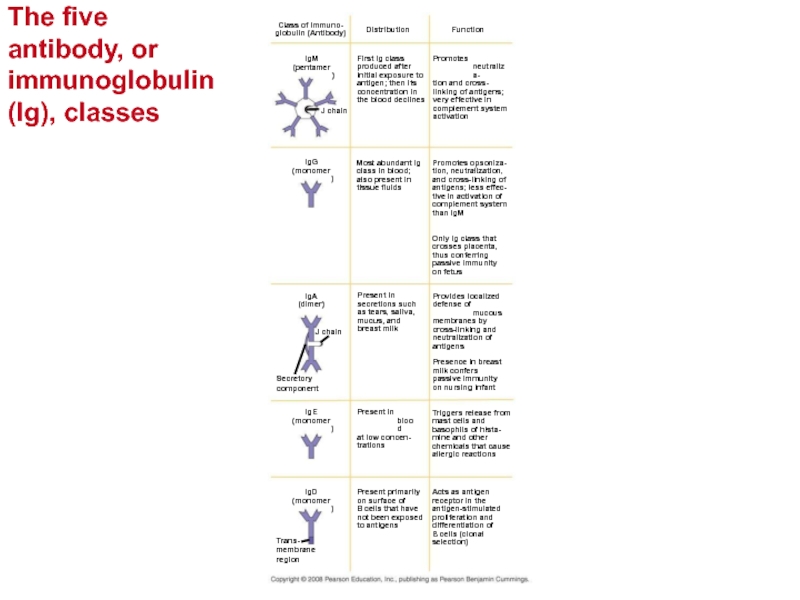
Слайд 53Distribution
Class of Immuno-
globulin (Antibody)
IgM
(pentamer)
J chain
First Ig class
produced after
initial exposure to
antigen;
then its
concentration in
the blood declines
Promotes neutraliza-
tion and cross-
linking of antigens;
very
effective in
complement system
activation
Function
Слайд 54Distribution
Function
Class of Immuno-
globulin (Antibody)
IgG
(monomer)
Most abundant Ig
class in blood;
also present in
tissue
fluids
Promotes opsoniza-
tion, neutralization,
and cross-linking of
antigens; less effec-
tive in activation of
complement
system
than IgM
Only Ig class that
crosses placenta,
thus conferring
passive immunity
on fetus
Слайд 55Distribution
Function
Class of Immuno-
globulin (Antibody)
IgA
(dimer)
J chain
Secretory
component
Present in
secretions such
as tears, saliva,
mucus, and
breast
milk
Provides localized
defense of mucous
membranes by
cross-linking and
neutralization of
antigens
Presence in breast
milk confers
passive
immunity
on nursing infant
Слайд 56Distribution
Function
Class of Immuno-
globulin (Antibody)
IgE
(monomer)
Present in blood
at low concen-
trations
Triggers release from
mast
cells and
basophils of hista-
mine and other
chemicals that cause
allergic reactions
Слайд 57Distribution
Function
Class of Immuno-
globulin (Antibody)
IgD
(monomer)
Trans-
membrane
region
Present primarily
on surface of
B cells that have
not
been exposed
to antigens
Acts as antigen
receptor in the
antigen-stimulated
proliferation and
differentiation of
B cells
(clonal
selection)
Слайд 58The Role of Antibodies in Immunity
Neutralization occurs when a pathogen
can no longer infect a host because it is bound
to an antibody.
Opsonization occurs when antibodies bound to antigens increase phagocytosis.
Antibodies together with proteins of the complement system generate a membrane attack complex and cell lysis.
Слайд 59Antibody-mediated mechanisms of antigen disposal
Viral neutralization
Virus
Opsonization
Bacterium
Macrophage
Activation of complement system
and
pore formation
Complement proteins
Formation of
membrane
attack complex
Flow of water
and ions
Pore
Foreign
cell
Слайд 60Active Immunization
Active immunity develops naturally in response to an infection.
It
can also develop following/ from immunization, also called vaccination.
In immunization,
a nonpathogenic form of a microbe or part of a microbe elicits an immune response to an immunological memory.
Слайд 61Passive immunity provides immediate, short-term protection.
It is conferred naturally when
IgG crosses the placenta from mother to fetus or when
IgA passes from mother to infant in breast milk.
It can also be conferred artificially by injecting antibodies into a nonimmune person.
Passive Immunity
Слайд 62Passive immunization of an infant occurs during breast-feeding
Слайд 63Immune Rejection
Cells transferred from one person to another can be
attacked by immune defenses.
This complicates blood transfusions or the transplant
of tissues or organs.
MHC molecules are different among genetically nonidentical individuals.
Differences in MHC molecules stimulate rejection of tissue grafts and organ transplants.
Слайд 64Chances of successful transplantation increase if donor and recipient MHC
tissue types are well matched.
Immunosuppressive drugs facilitate transplantation.
Lymphocytes in bone
marrow transplants may cause the donor tissue to reject the recipient.
Слайд 65Blood Groups
Antigens on red blood cells surface determine whether a
person has blood type A (A antigen), B (B antigen),
AB (both A and B antigens), or O (neither antigen).
Antibodies to nonself blood types exist in the body.
Transfusion with incompatible blood leads to destruction of the transfused cells.
Recipient-donor combinations can be fatal or safe.
Слайд 66 Disruption in immune system function can elicit or exacerbate
disease
Some pathogens have evolved to diminish the effectiveness of host
immune responses.
If the delicate balance of the immune system is disrupted, effects range from minor to often fatal.
Слайд 67Allergies
Allergies are exaggerated (hypersensitive) responses to antigens called allergens.
In localized
allergies such as hay fever, IgE antibodies produced after first
exposure to an allergen attach to receptors on mast cells.
Слайд 68Mast cells, IgE, and the allergic response
Allergen
IgE
Granule
Mast cell
Histamine
Слайд 69The next time the allergen enters the body, it binds
to mast cell–associated IgE molecules.
Mast cells release histamine and other
mediators that cause vascular changes leading to typical allergy symptoms.
An acute allergic response can lead to anaphylactic shock, a life-threatening reaction that can occur within seconds of allergen exposure.
Слайд 70Autoimmune Diseases
In individuals with autoimmune diseases, the immune system loses
tolerance for self and turns against certain molecules of the
body.
Autoimmune diseases include systemic lupus erythematosus, rheumatoid arthritis, insulin-dependent diabetes mellitus, and multiple sclerosis.
Слайд 71X-ray of a hand deformed by rheumatoid arthritis
Слайд 72Exertion, Stress, and the Immune System
Moderate exercise improves immune system
function.
Psychological stress has been shown to disrupt hormonal, nervous, and
immune systems.
Слайд 73Immunodeficiency Diseases
Inborn immunodeficiency results from hereditary or developmental defects that
prevent proper functioning of innate, humoral, and/or cell-mediated defenses.
Acquired immunodeficiency
results from exposure to chemical and biological agents.
Acquired immunodeficiency syndrome (AIDS) is caused by a virus.
Слайд 74Acquired Immune System Evasion by Pathogens
Pathogens have evolved mechanisms to
attack immune responses.
Through antigenic variation, some pathogens are able to
change epitope expression and prevent recognition.
The human influenza virus mutates rapidly, and new flu vaccines must be made each year.
Human viruses occasionally exchange genes with the viruses of domesticated animals.
This poses a danger as human immune systems are unable to recognize the new viral strain.
Слайд 75Latency
Some viruses may remain in a host in an inactive
state called latency.
Herpes simplex viruses can be present in a
human host without causing symptoms.
Слайд 76Attack on the Immune System: HIV
Human immunodeficiency virus (HIV) infects
helper T cells.
The loss of helper T cells impairs both
the humoral and cell-mediated immune responses and leads to AIDS.
HIV eludes the immune system because of antigenic variation and an ability to remain latent while integrated into host DNA.
Слайд 77The progress of an untreated HIV infection
Latency
Relative antibody
concentration
AIDS
Helper T cell
concentration
in blood (cells/mm3)
Helper T cell
concentration
Relative HIV
concentration
Years after untreated infection
0
1
2
3
4
5
6
7
8
9
10
0
200
400
600
800
Слайд 78People with AIDS are highly susceptible to opportunistic infections and
cancers that take advantage of an immune system in collapse.
The spread of HIV is a worldwide problem.
The best approach for slowing this spread is education about practices that transmit the virus.
Слайд 79Cancer and Immunity
The frequency of certain cancers increases when the
immune response is impaired.
Two suggested explanations are
Immune system normally suppresses
cancerous cells
Increased inflammation increases the risk of cancer
Слайд 80Review
Stem cell
Cell division and gene rearrangement
Antigen
Clonal selection
Elimination of
self-reactive
B cells
Formation of
activated cell populations
Antibody
Microbe
Memory cells
Effector B cells
Receptors bind to antigens
Слайд 81You should now be able to:
Distinguish between innate and acquired
immunity.
Name and describe four types of phagocytic cells.
Describe the inflammation
response.
Слайд 82Distinguish between the following pairs of terms: antigens and antibodies;
antigen and epitope; B lymphocytes and T lymphocytes; antibodies and
B cell receptors; primary and secondary immune responses; humoral and cell-mediated response; active and passive immunity.
Explain how B lymphocytes and T lymphocytes recognize specific antigens.
Explain why the antigen receptors of lymphocytes are tested for self-reactivity.
Слайд 83Describe clonal selection and distinguish between effector cells and memory
cells.
Describe the cellular basis for immunological memory.
Explain how a single
antigen can provoke a robust humoral response.
Compare the processes of neutralization and opsonization.
Слайд 84Describe the role of MHC in the rejection of tissue
transplants.
Describe an allergic reaction, including the roles of IgE, mast
cells, and histamine.
Describe some of the mechanisms that pathogens have evolved to thwart the immune response of their hosts.
List strategies that can reduce the risk of HIV transmission.
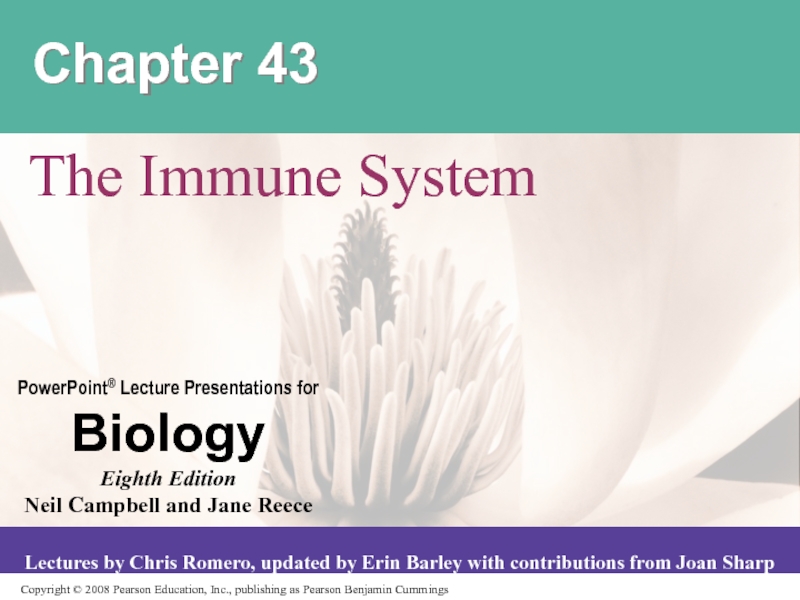
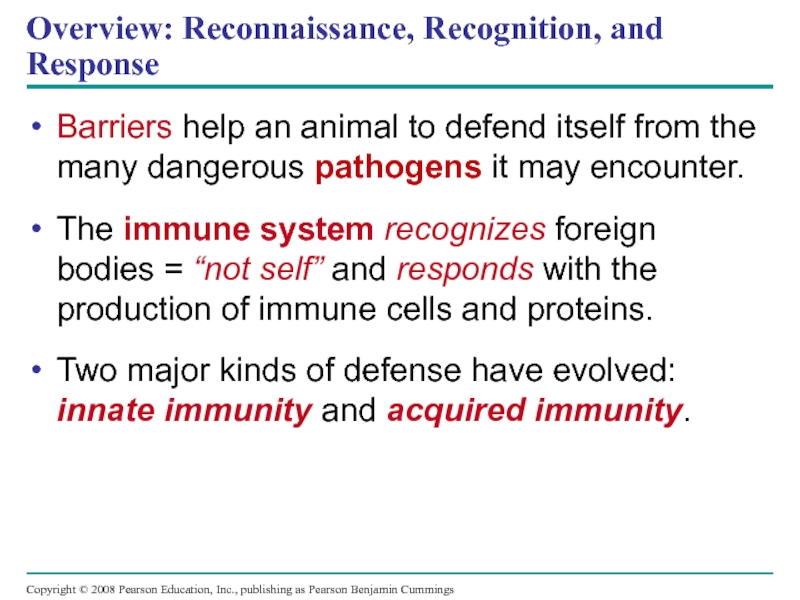
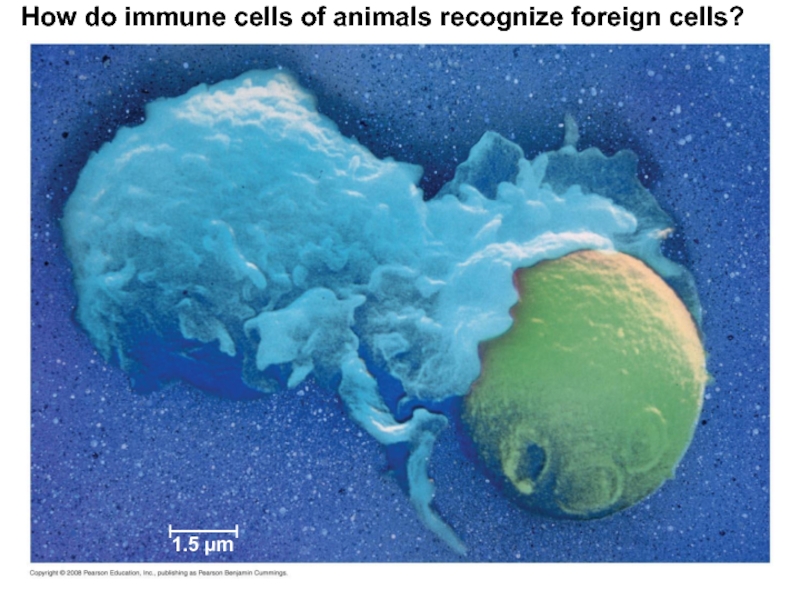
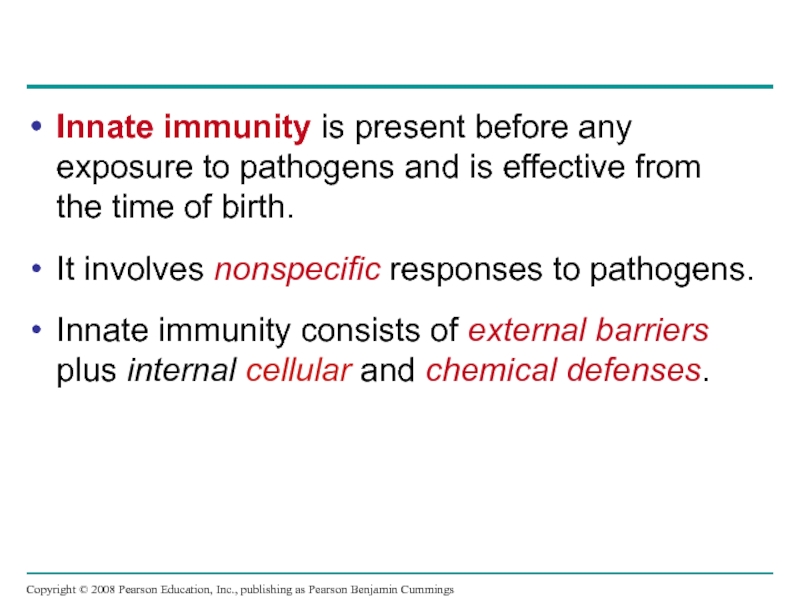
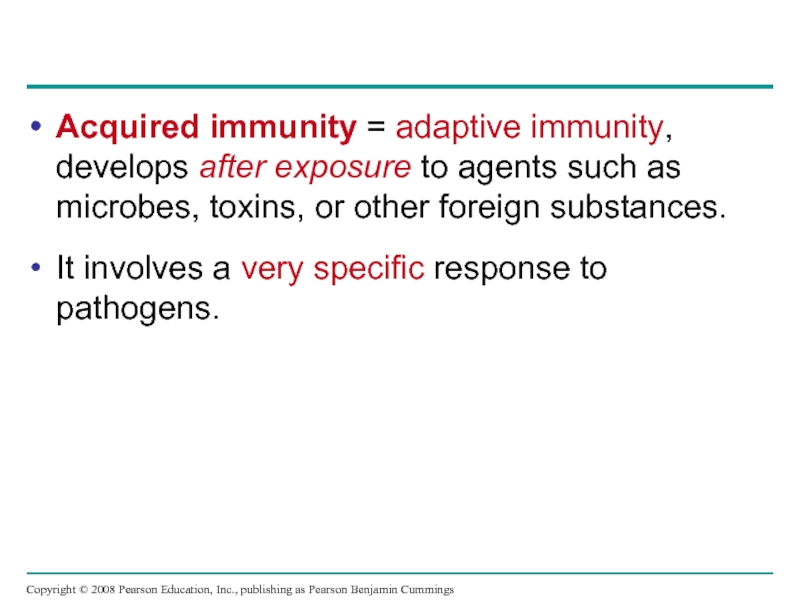
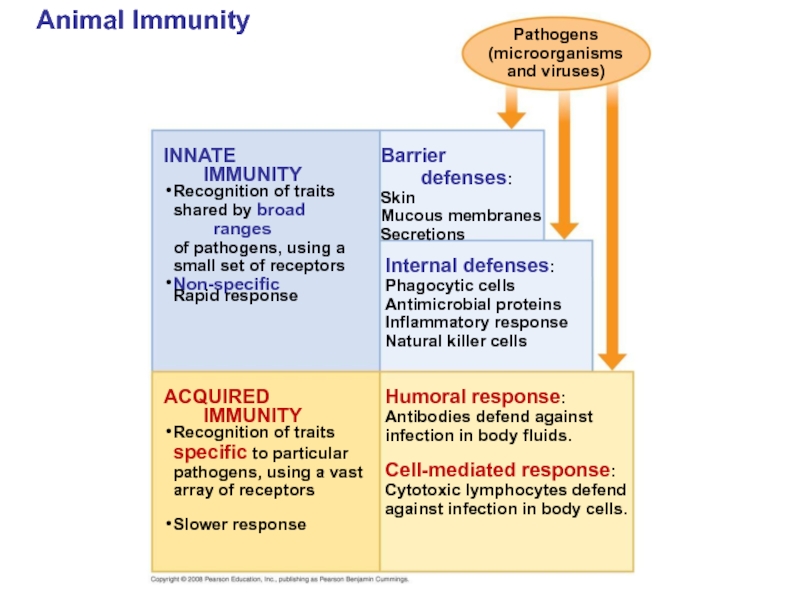
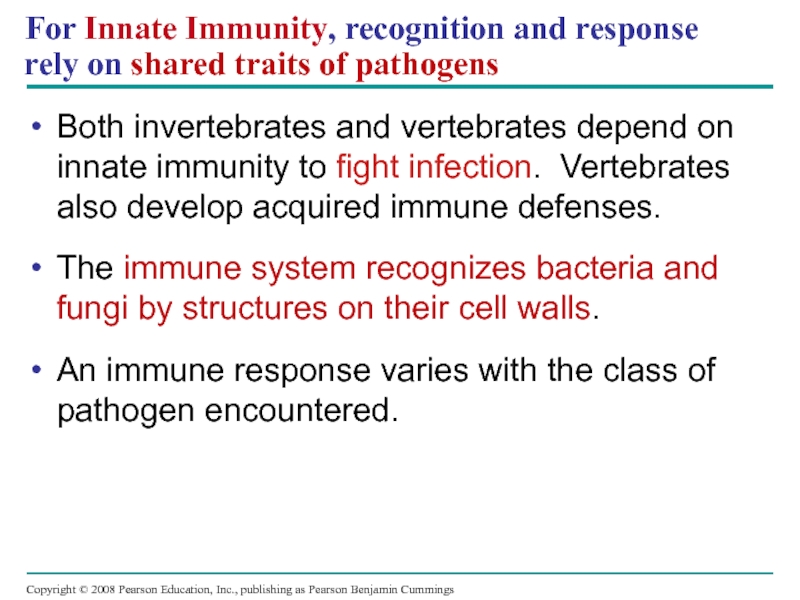
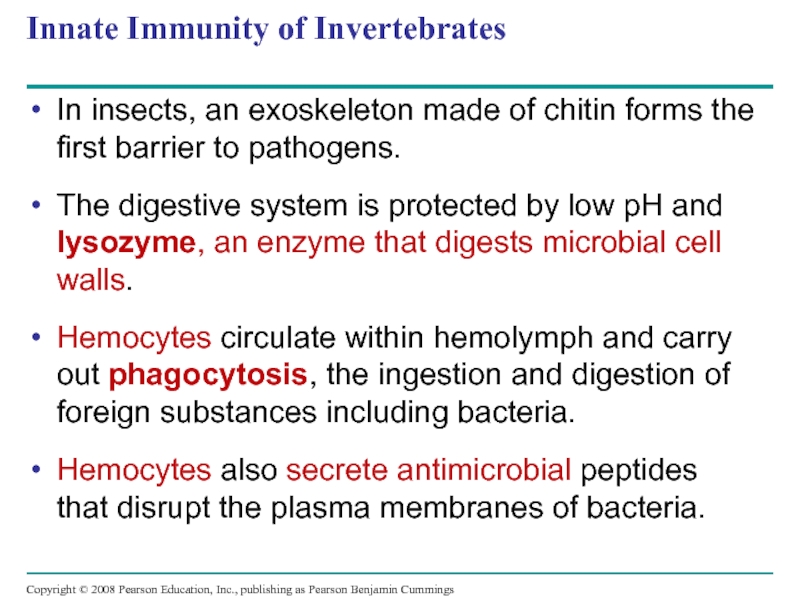
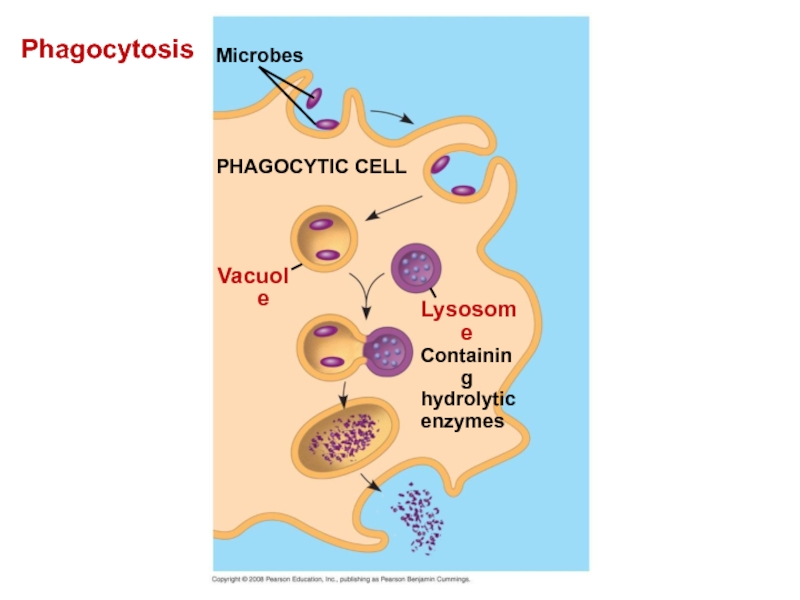
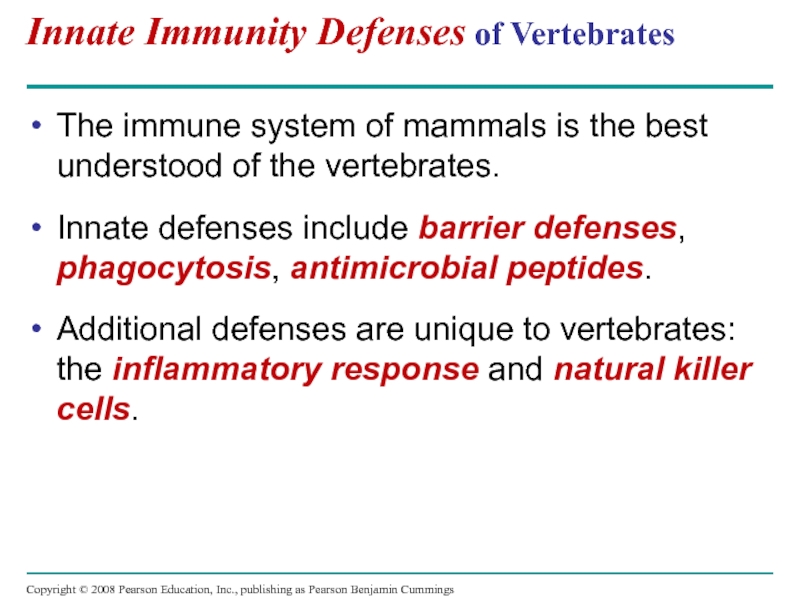
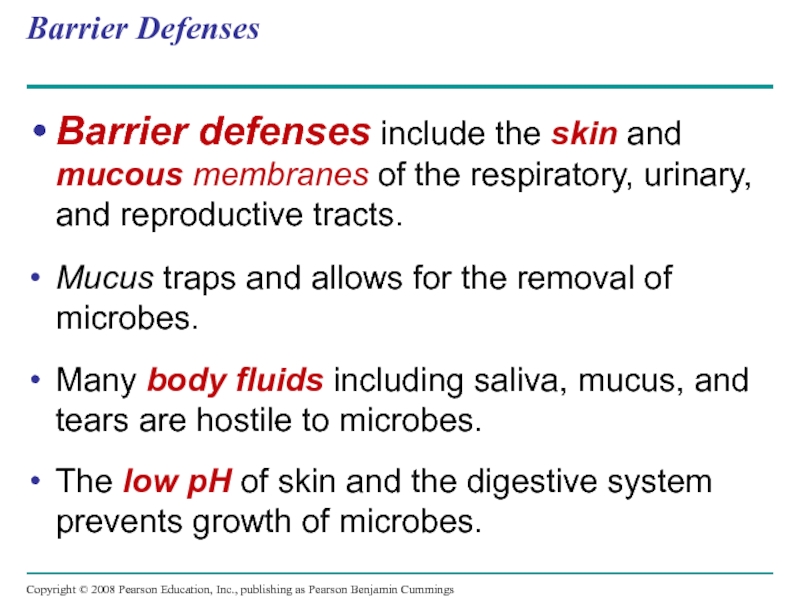
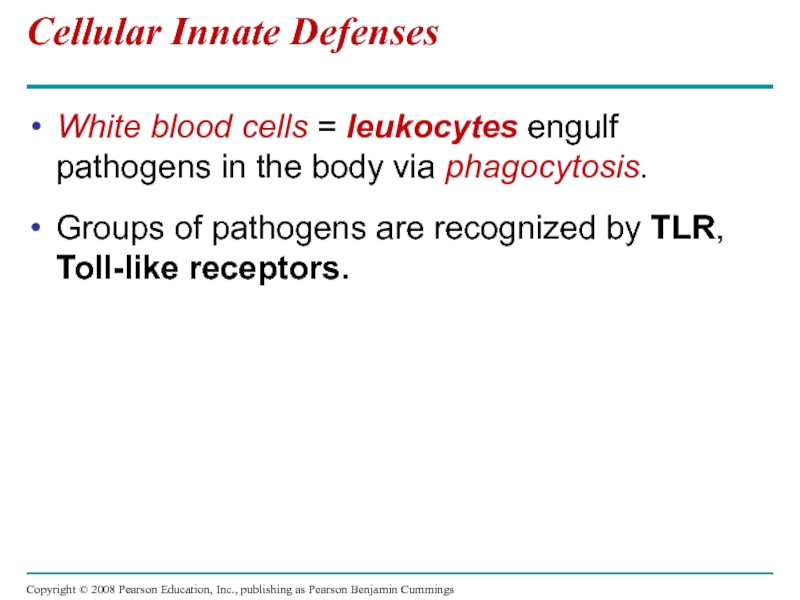
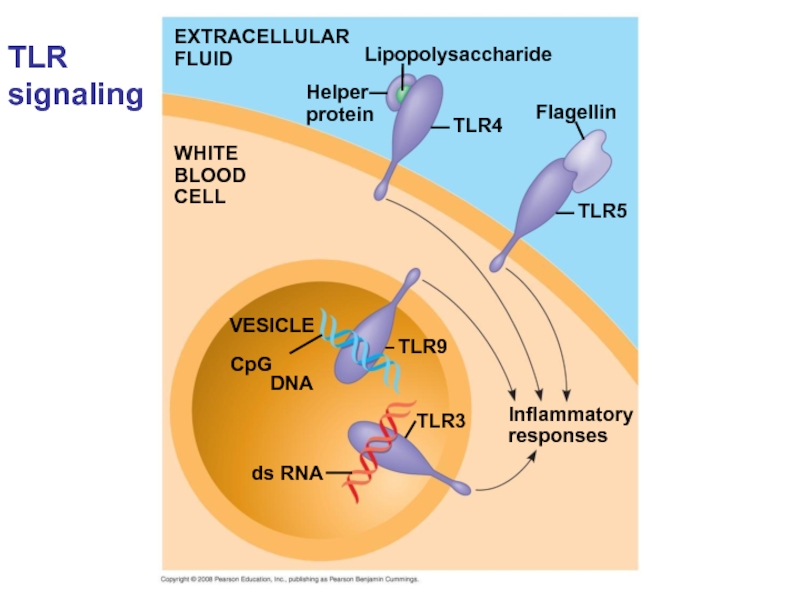
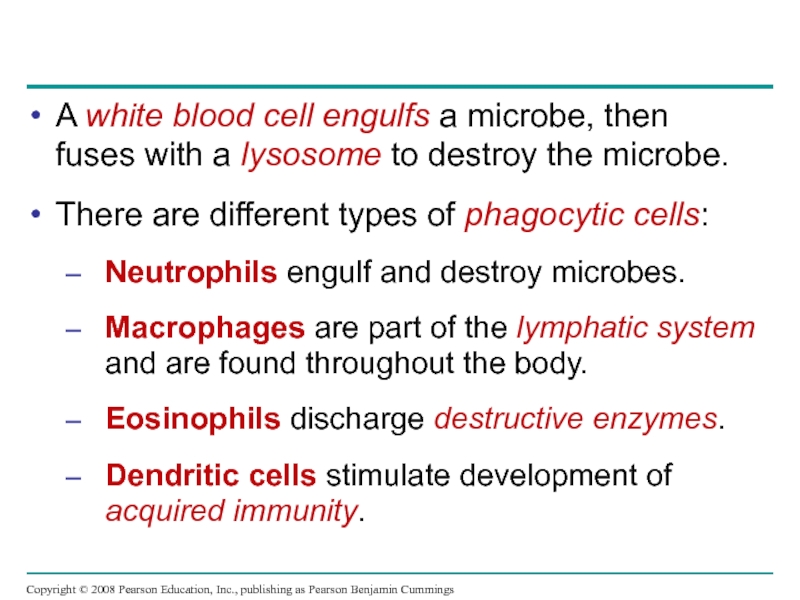
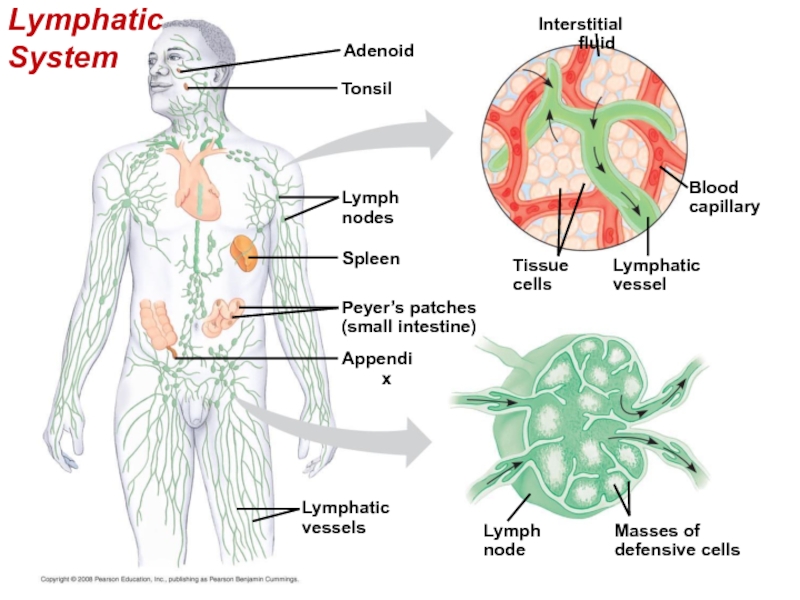
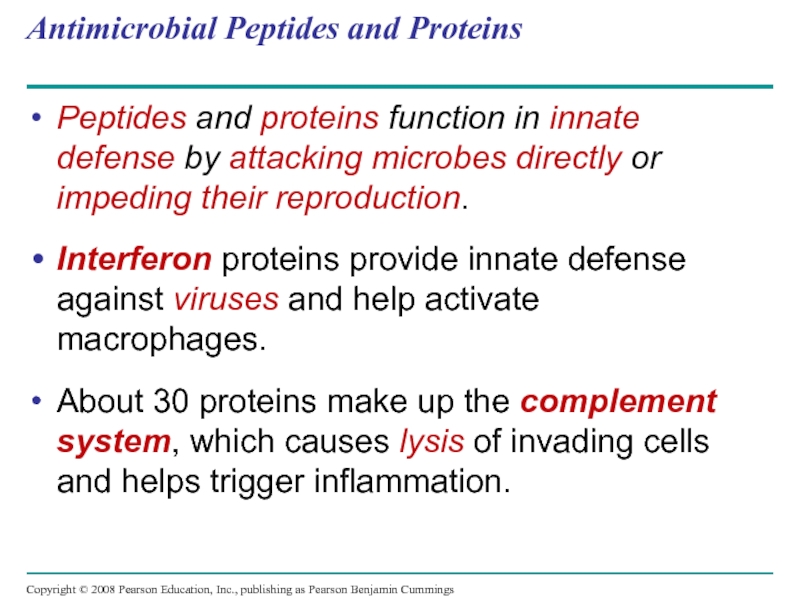
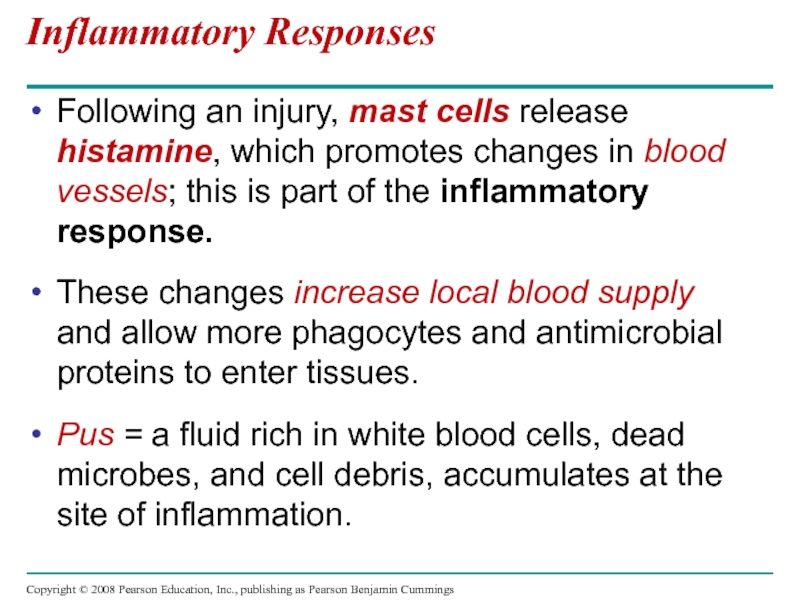
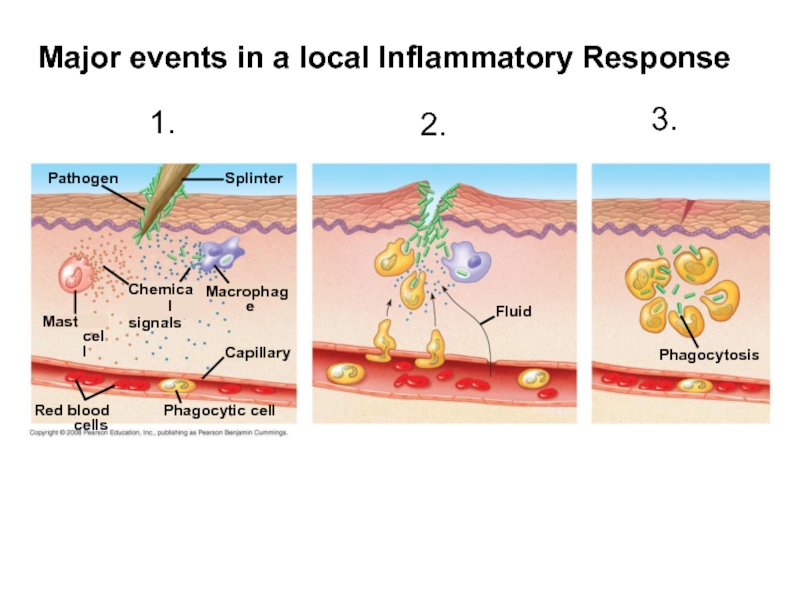
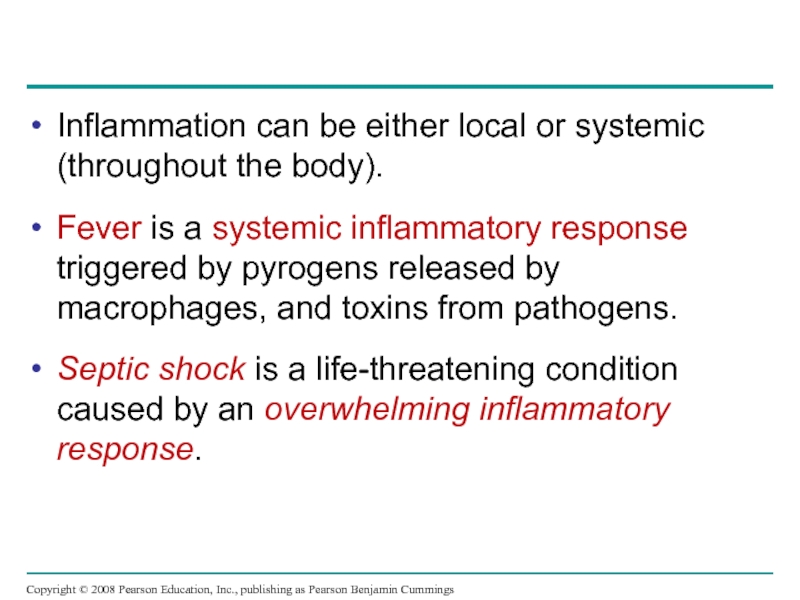
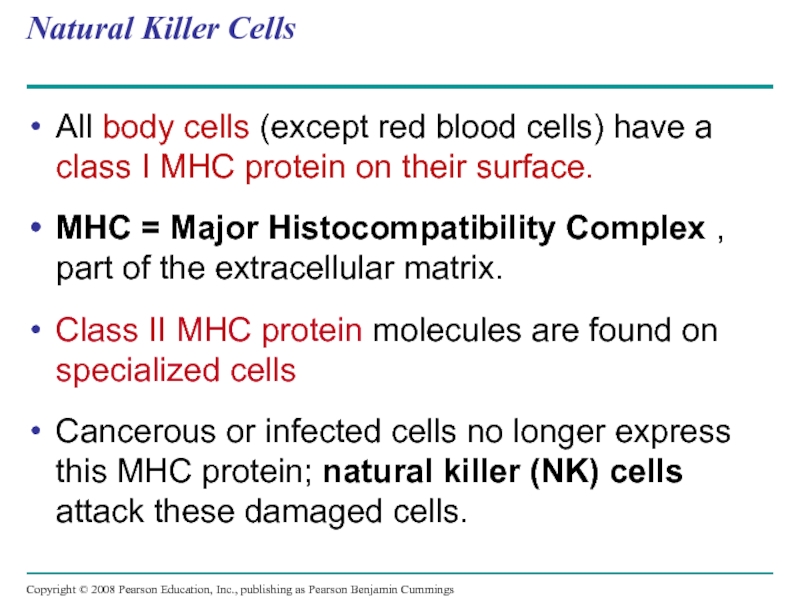
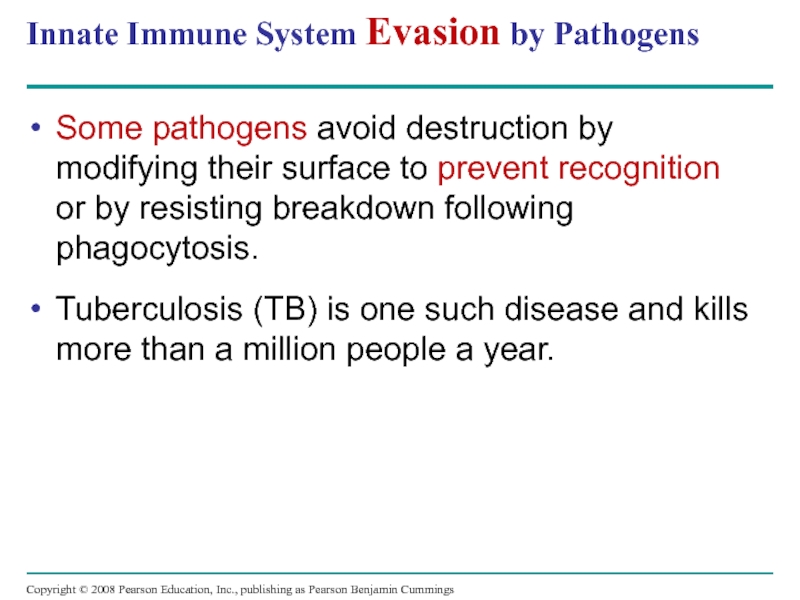
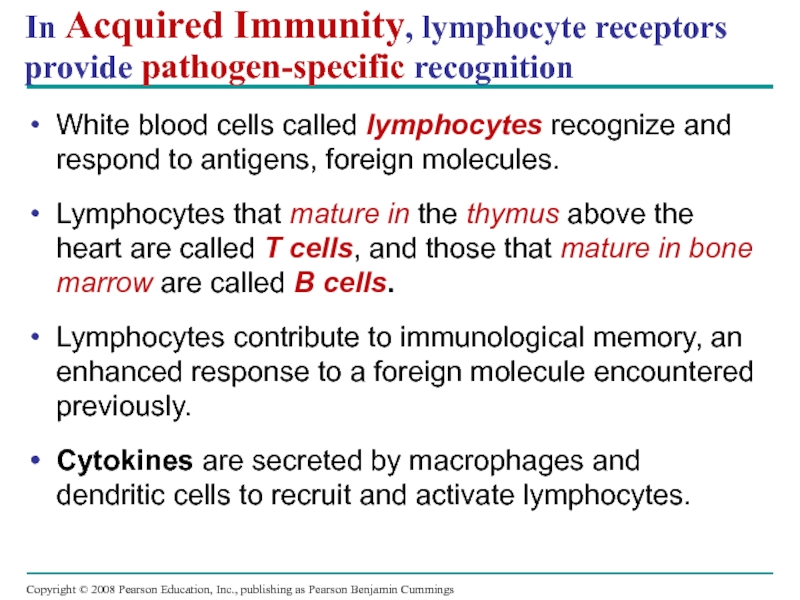
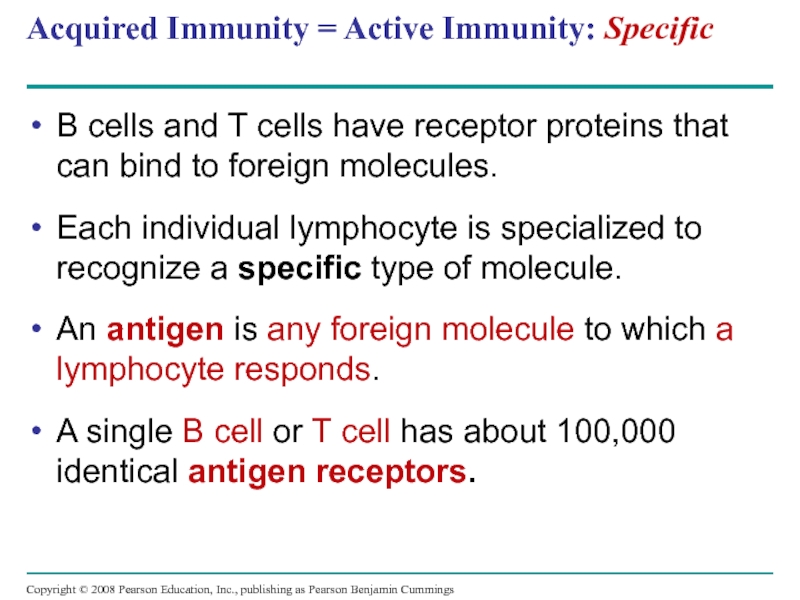
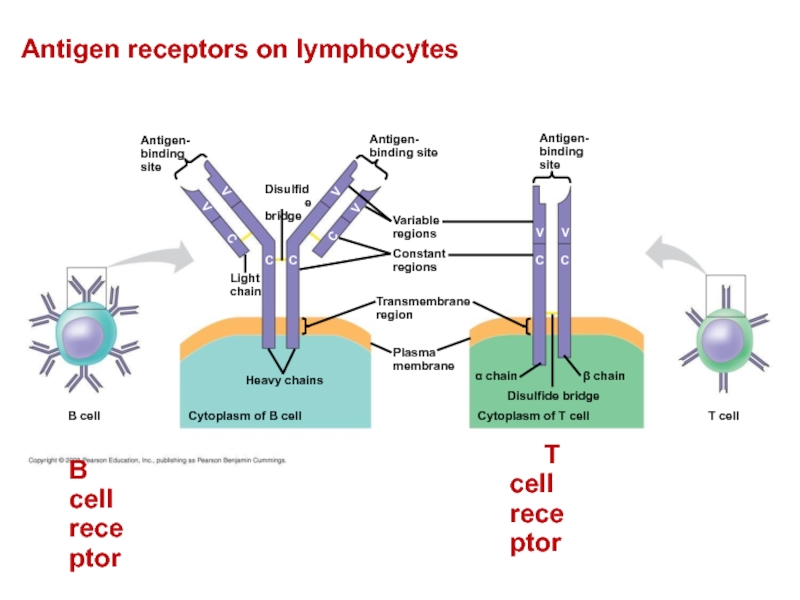
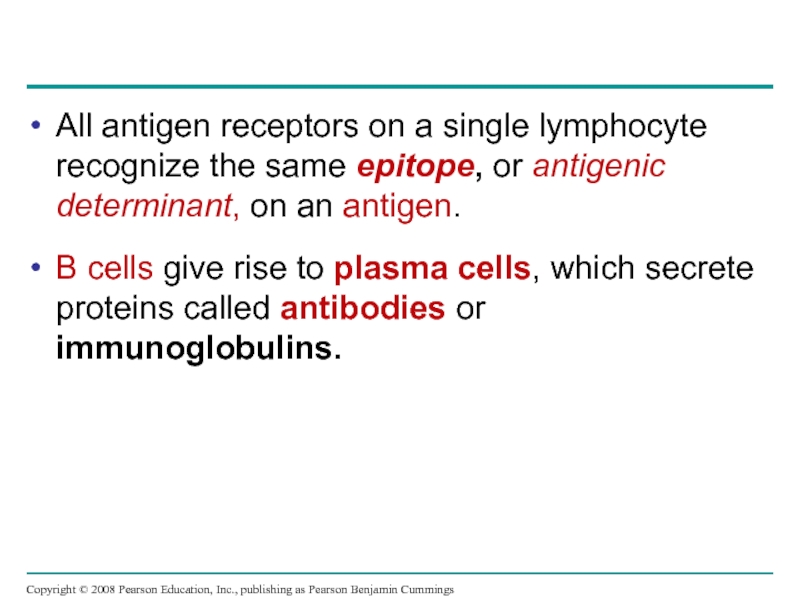
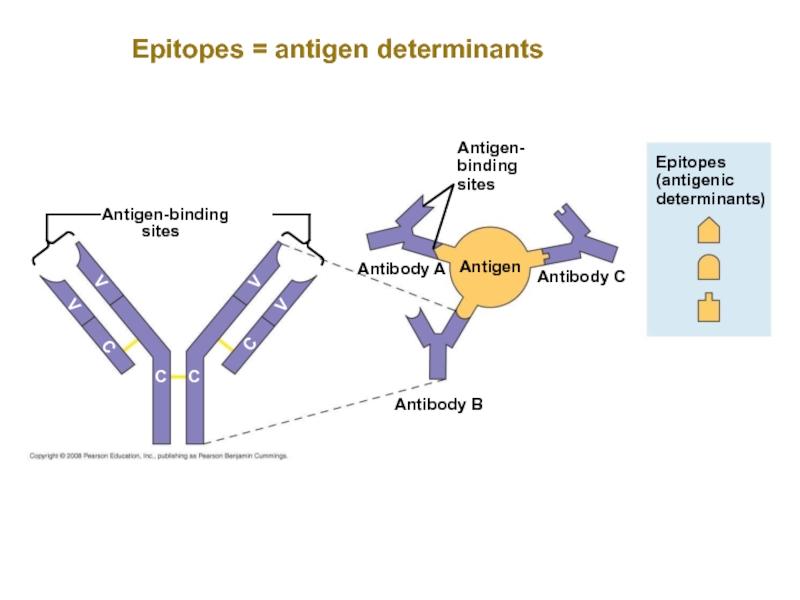
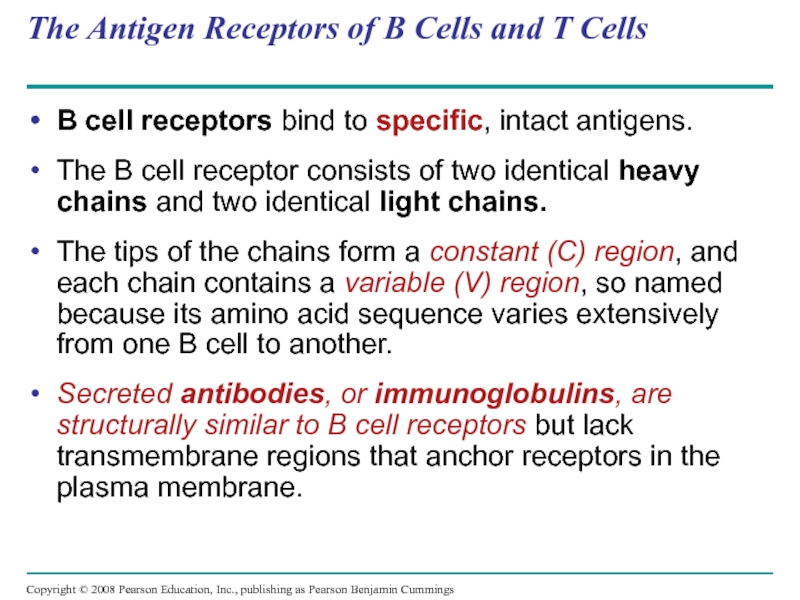
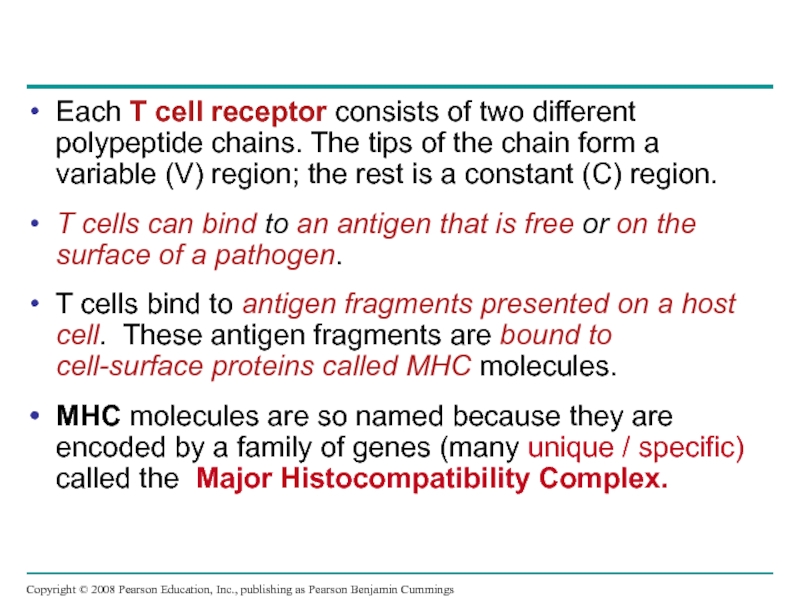
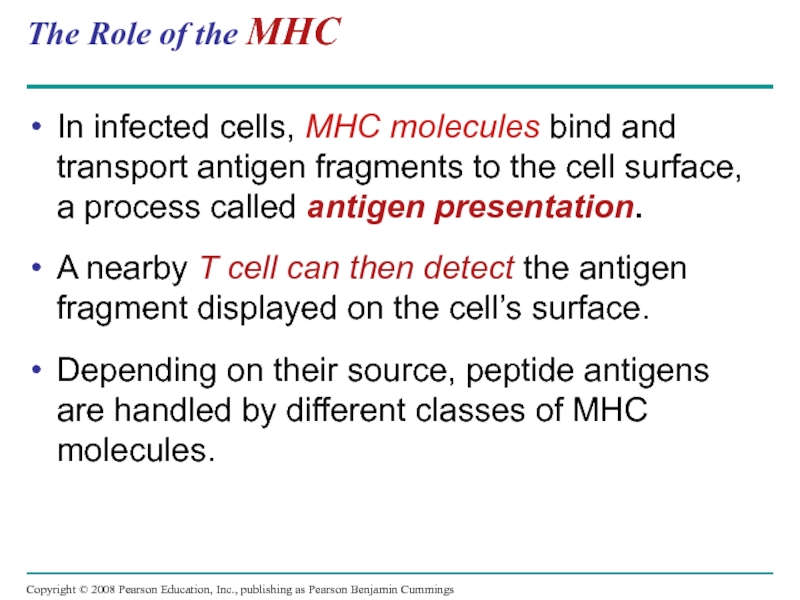
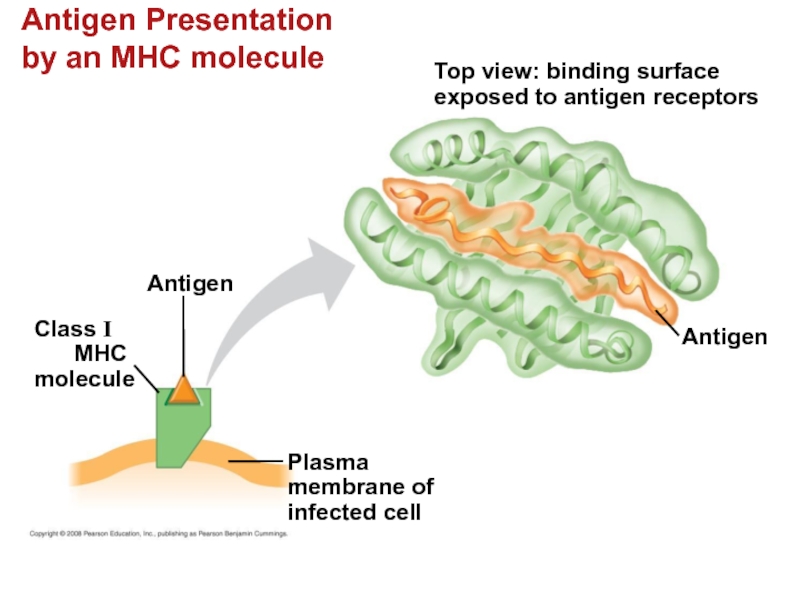
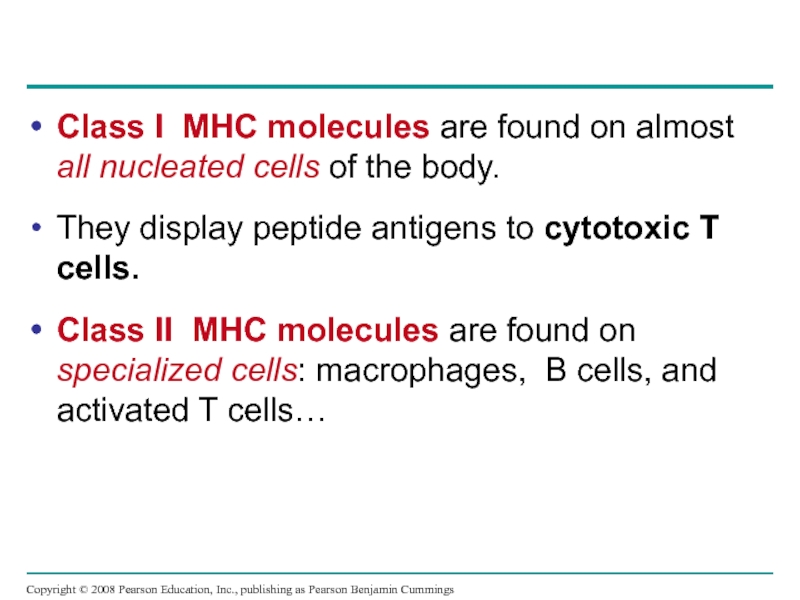
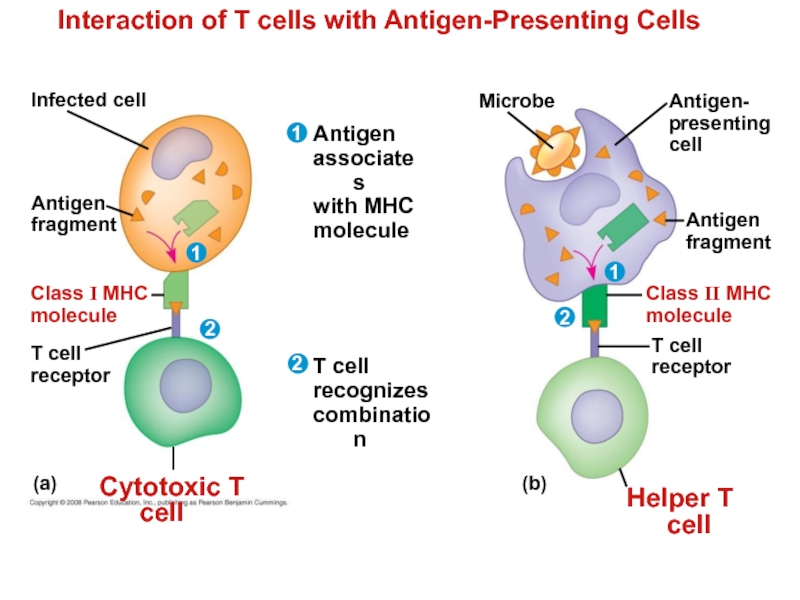
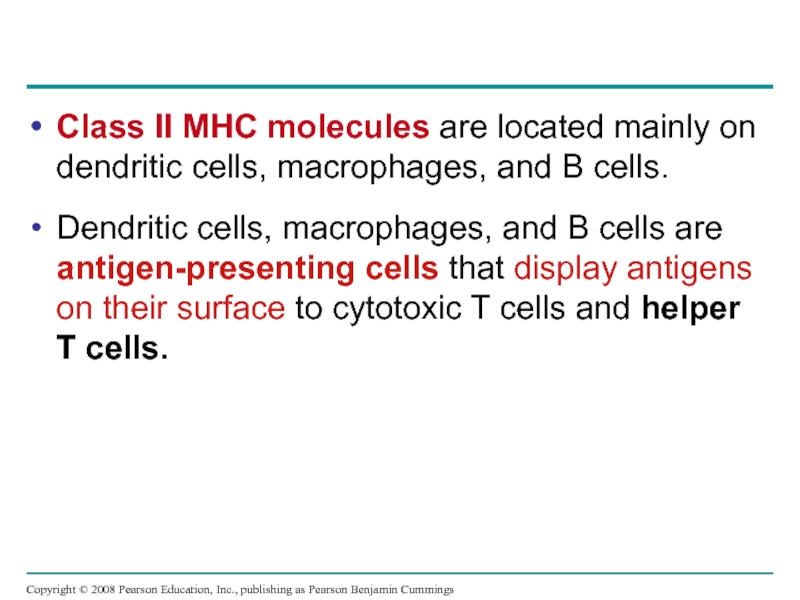
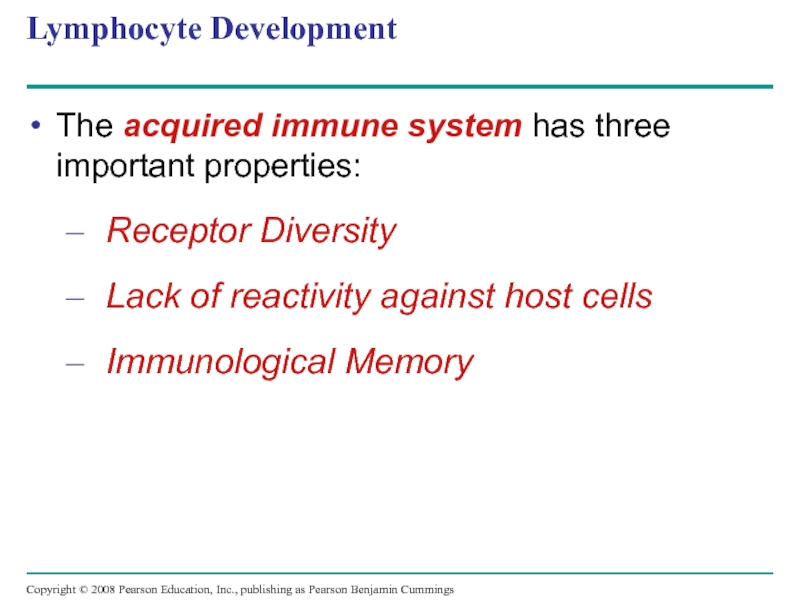
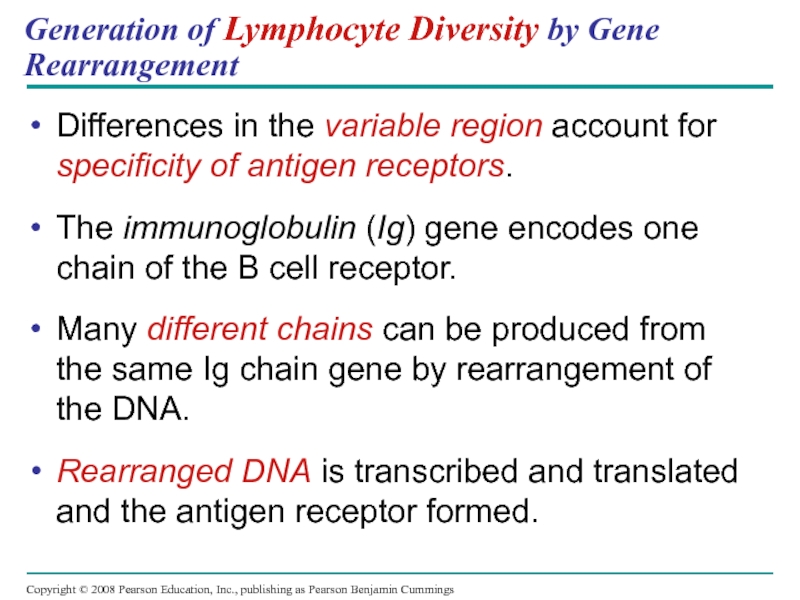
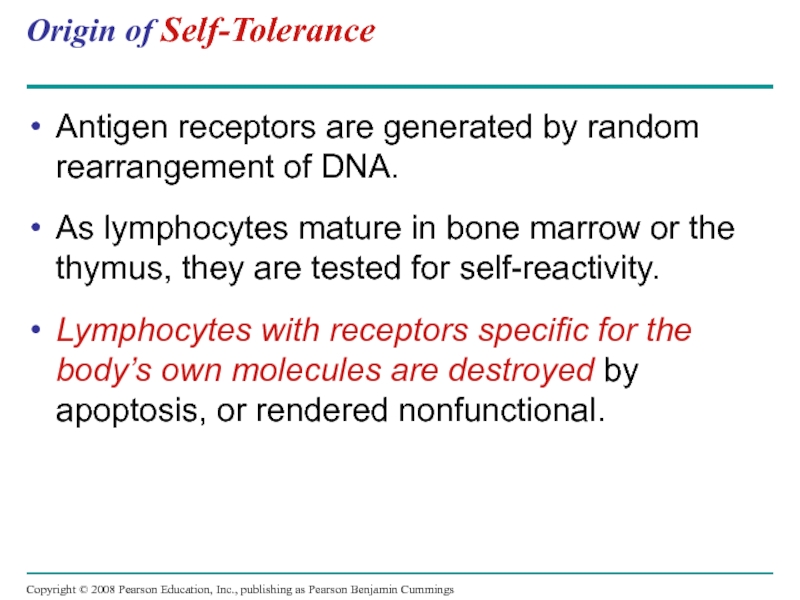
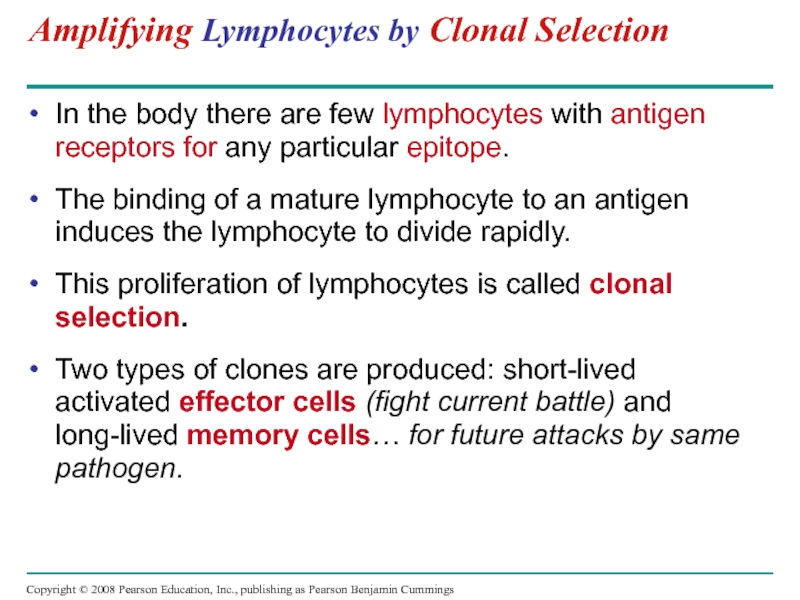
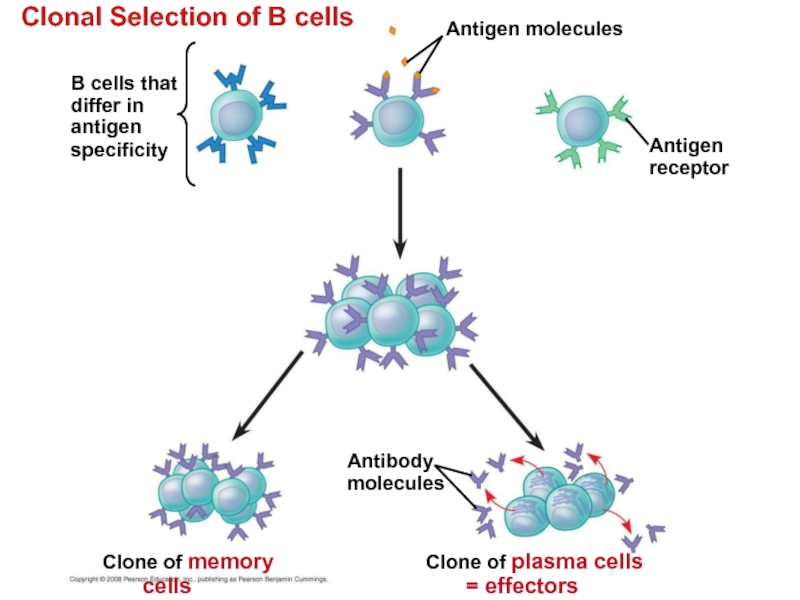
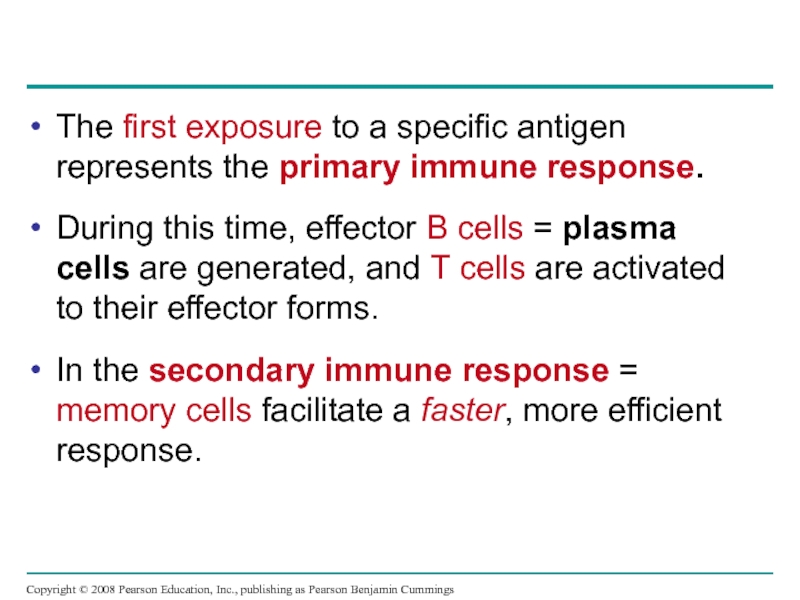
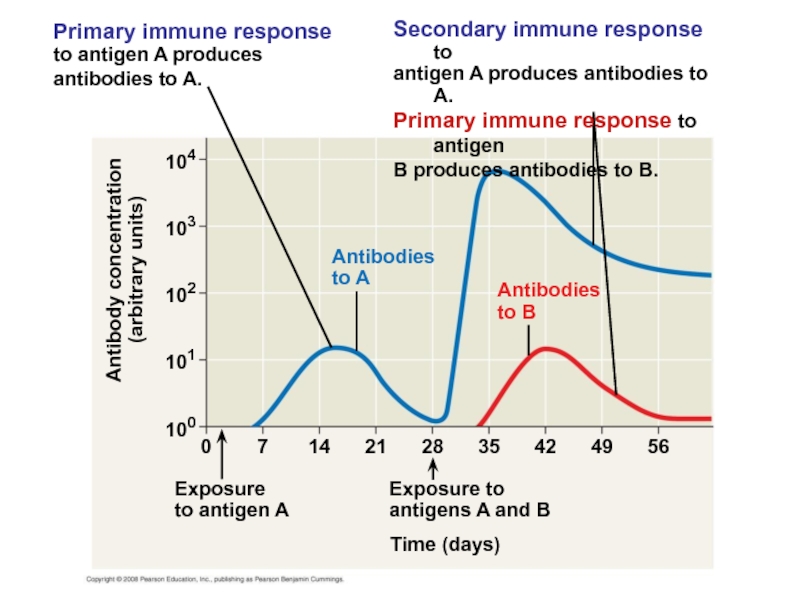
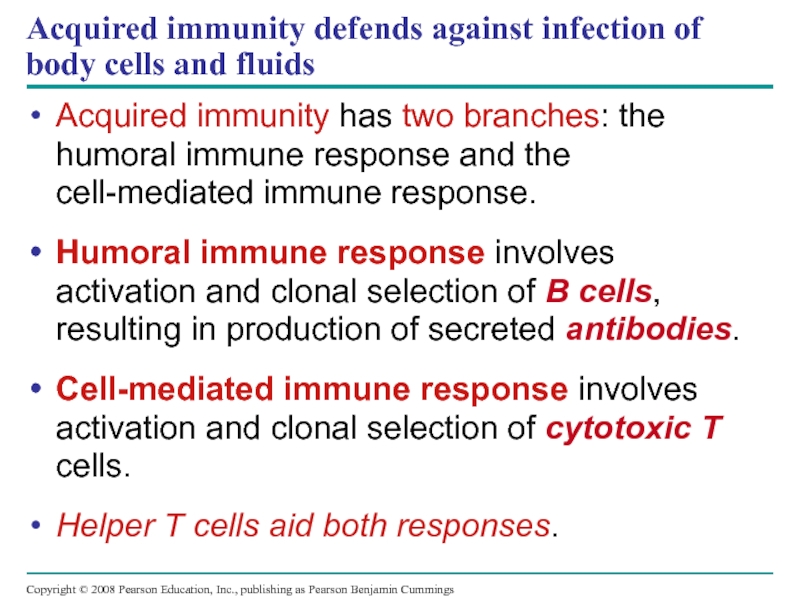
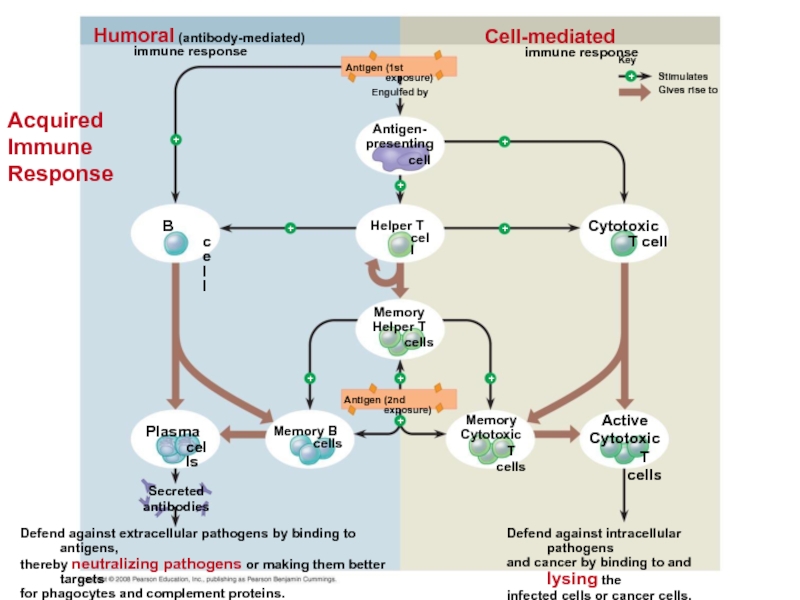
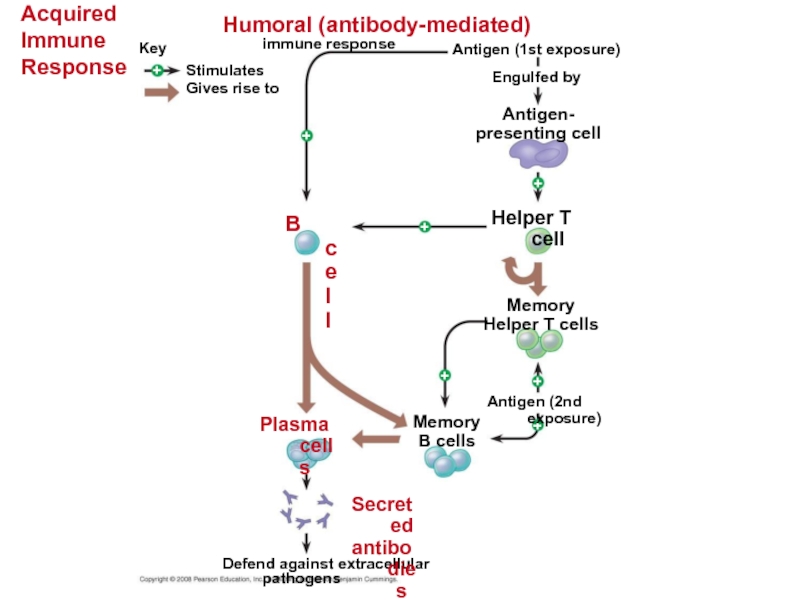
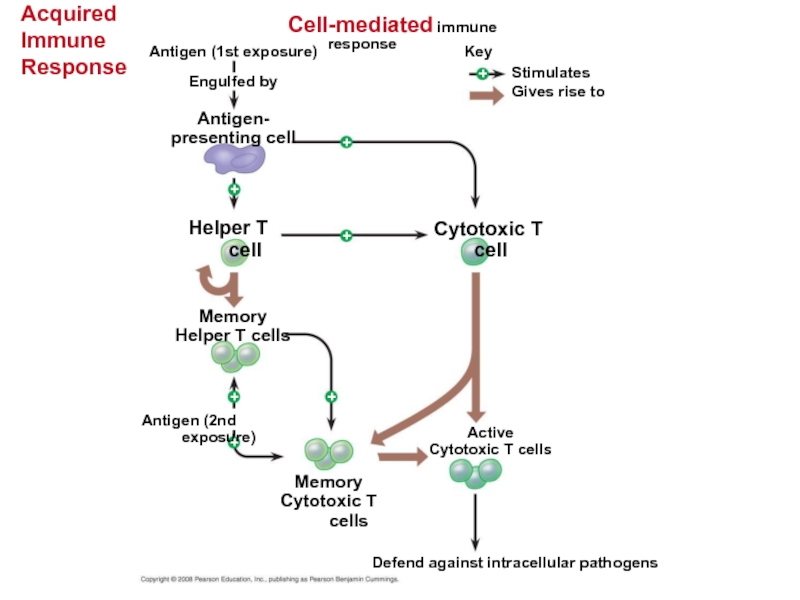
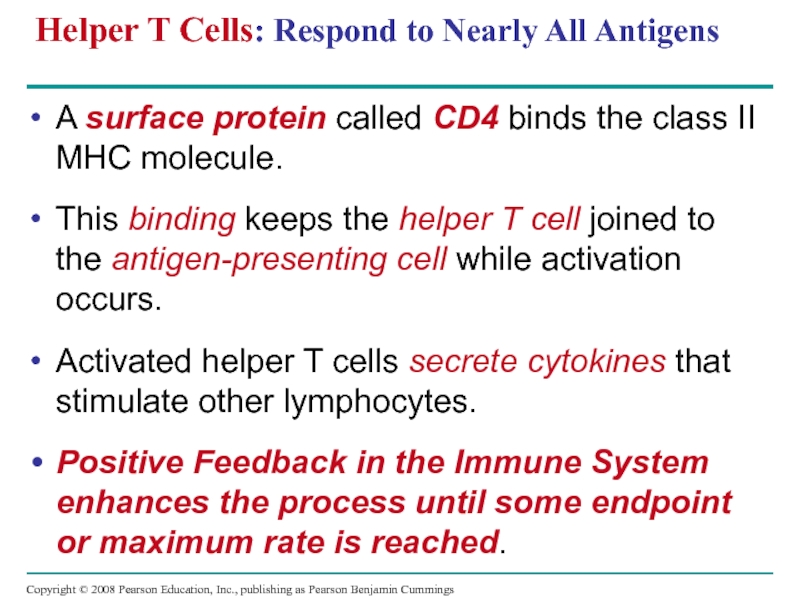
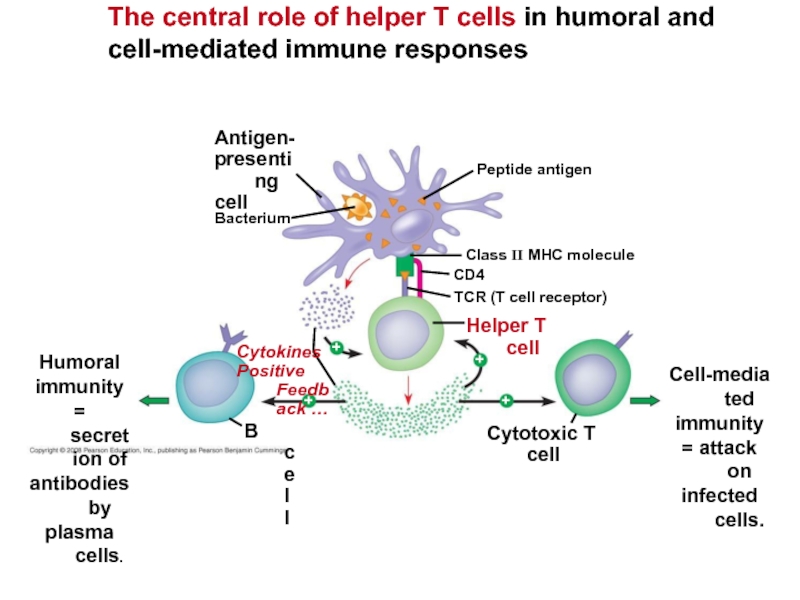
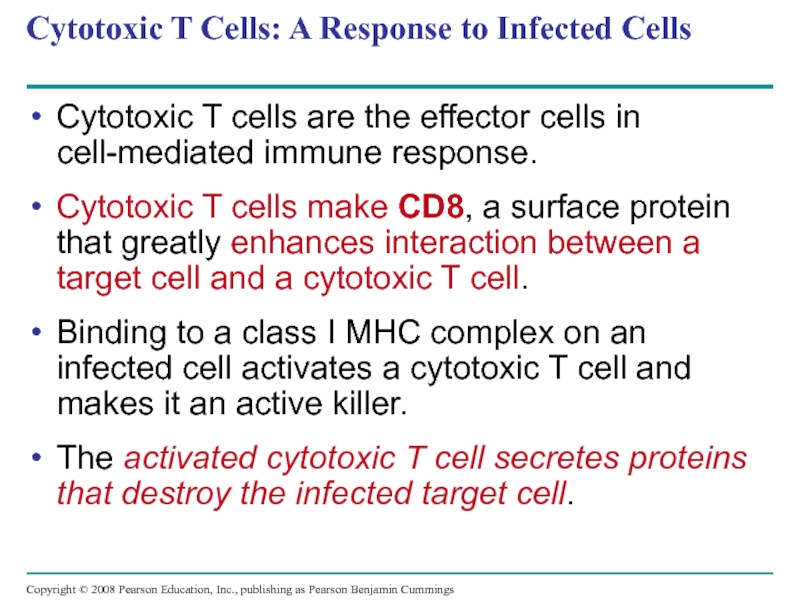
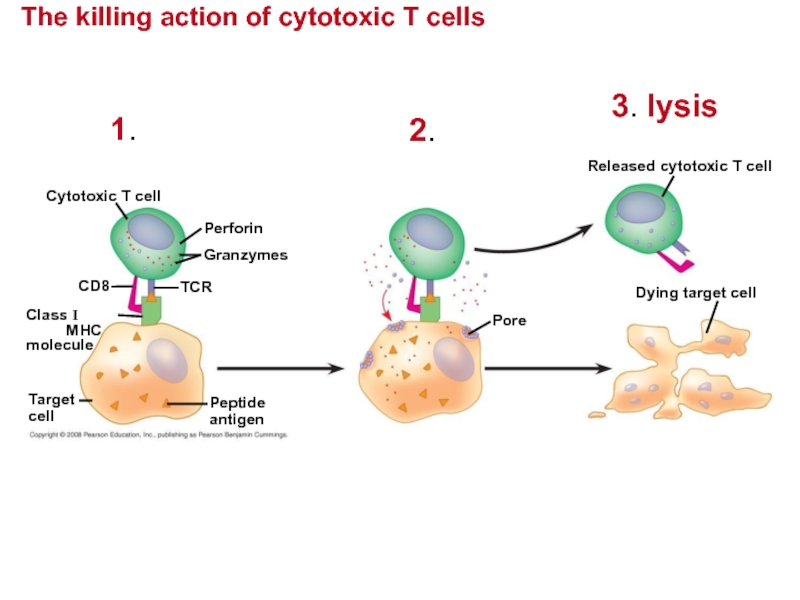
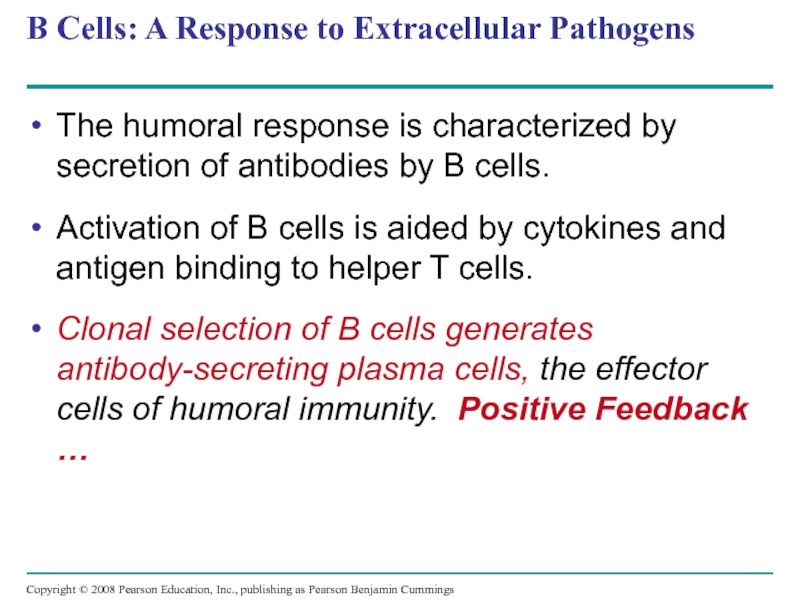
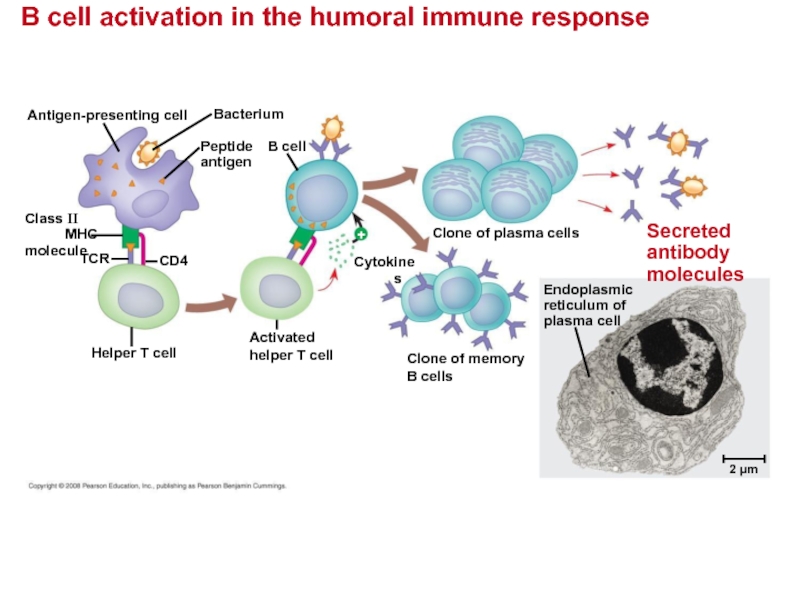
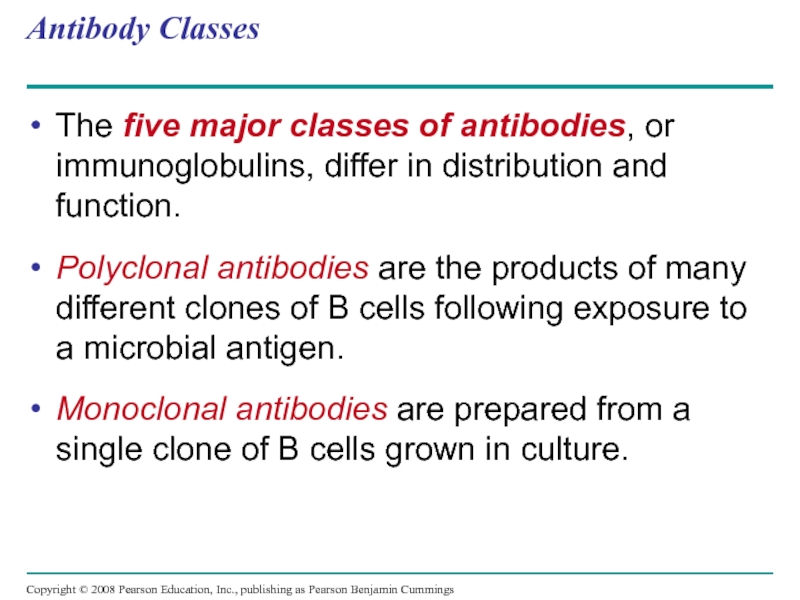

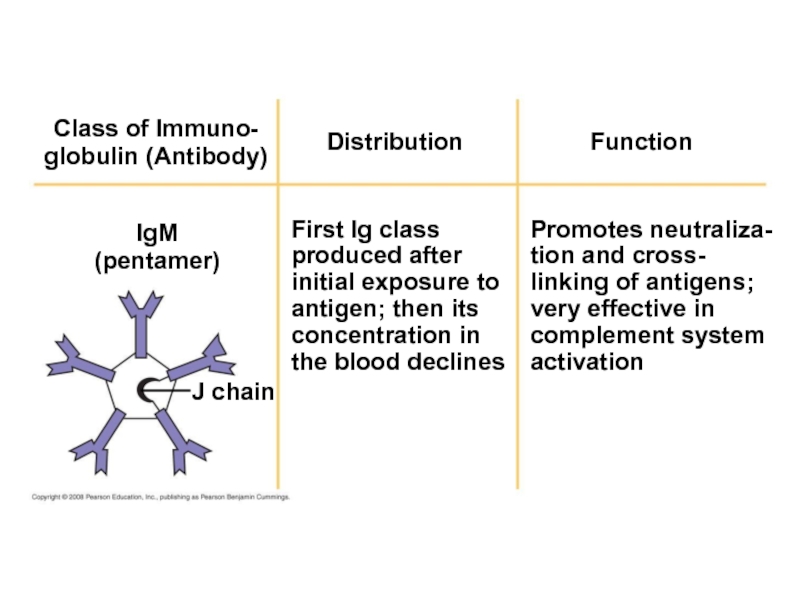
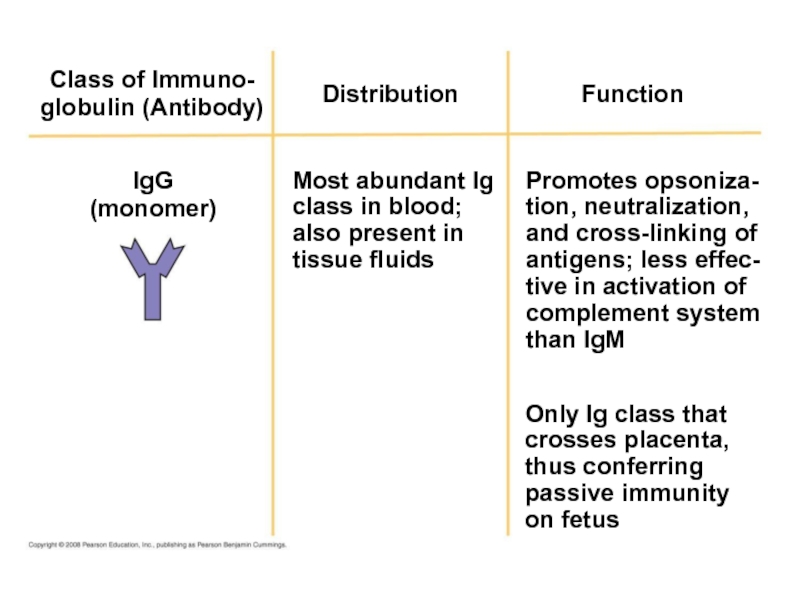

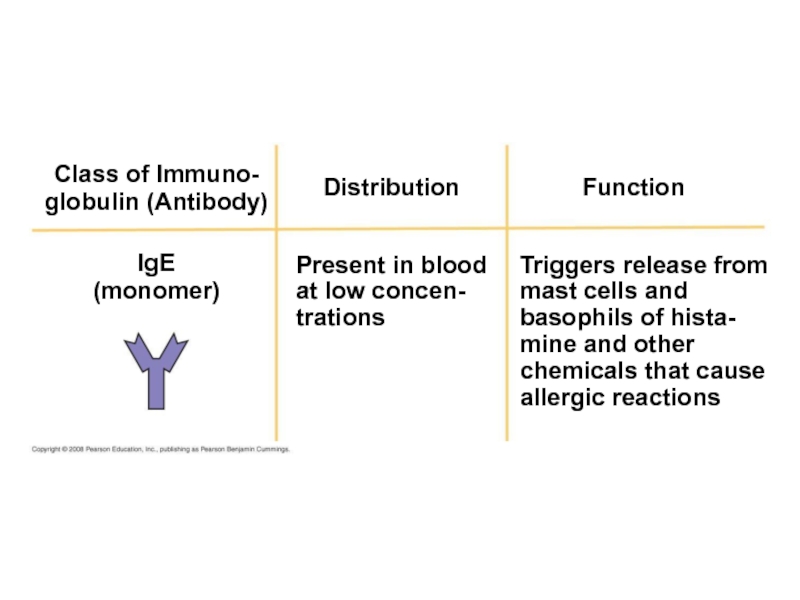
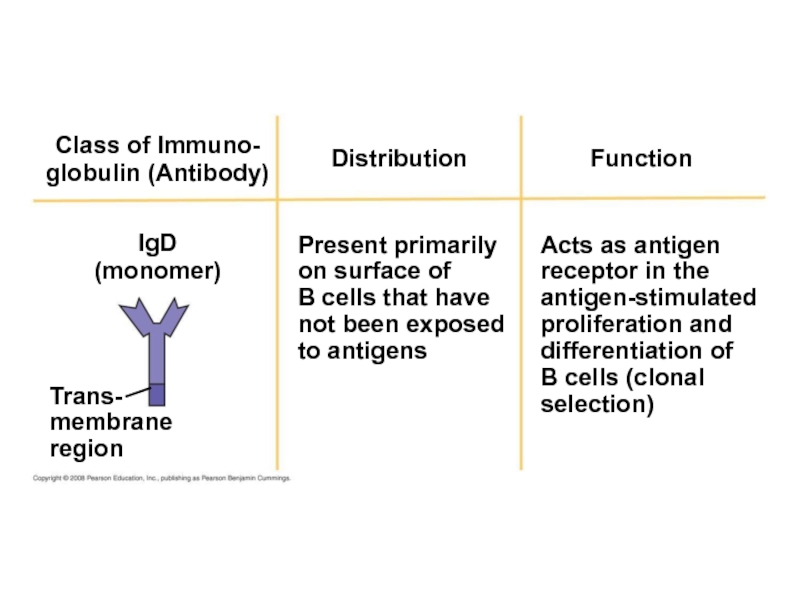
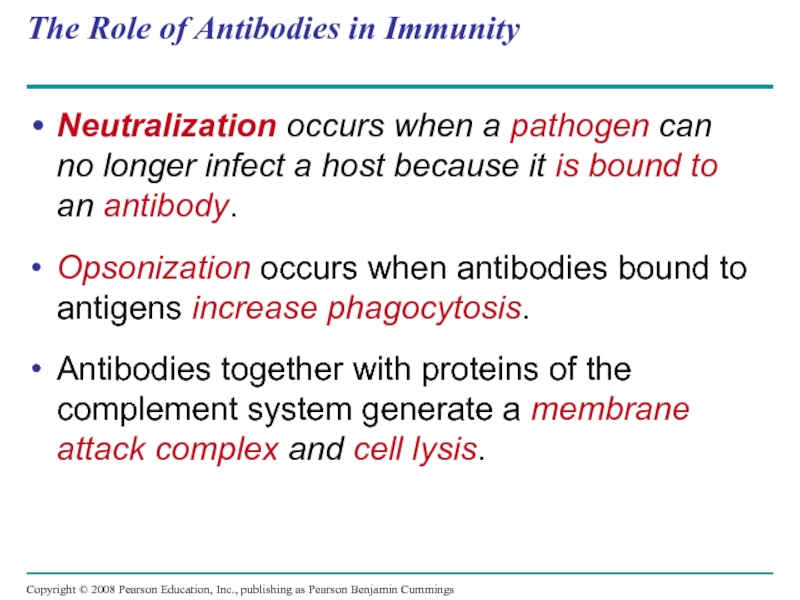
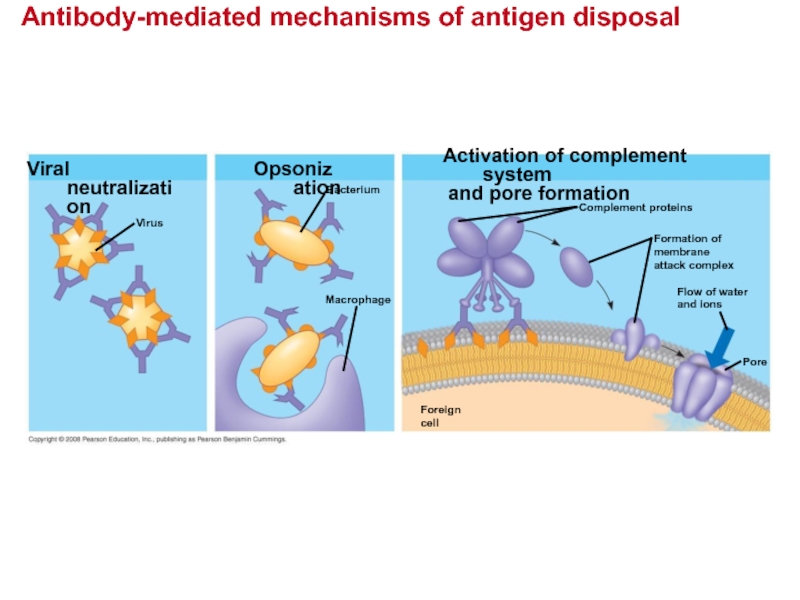
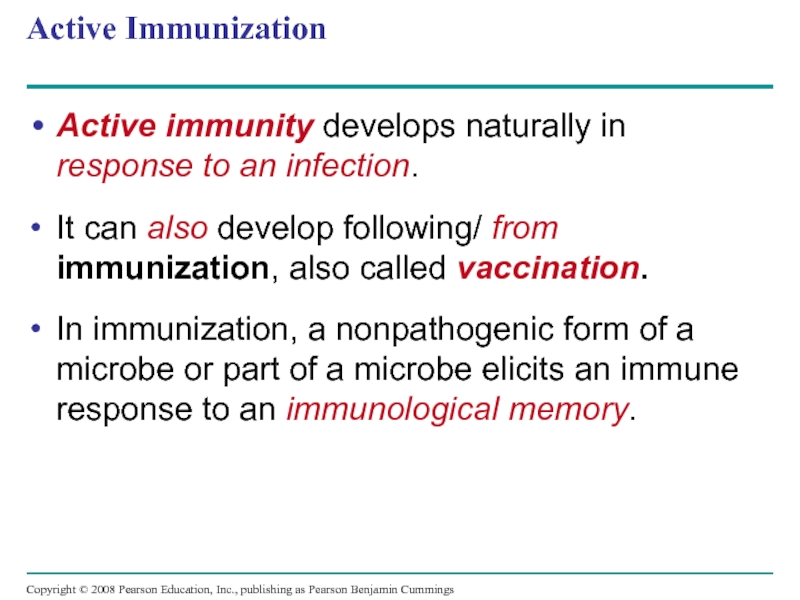
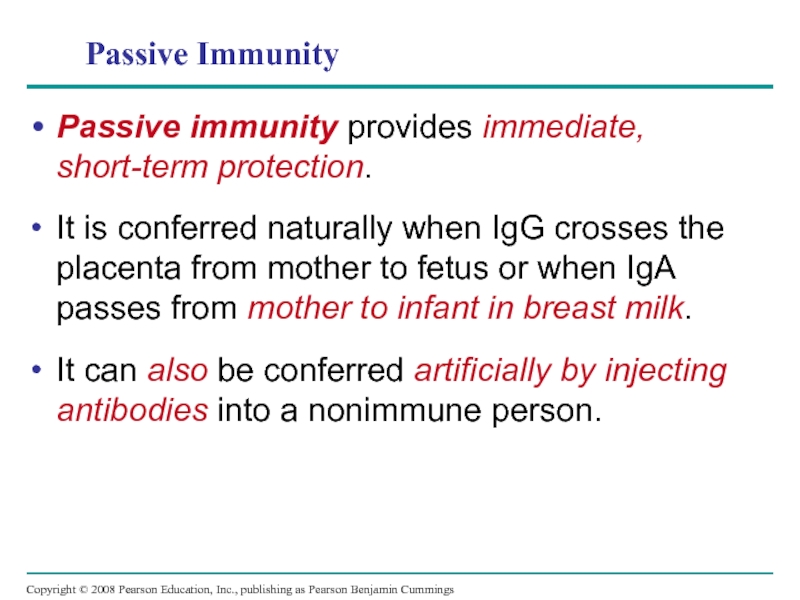
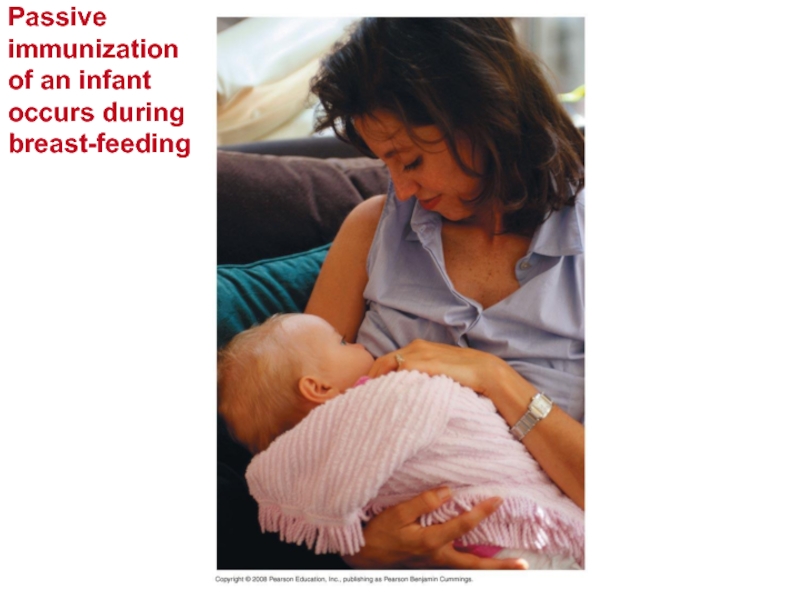
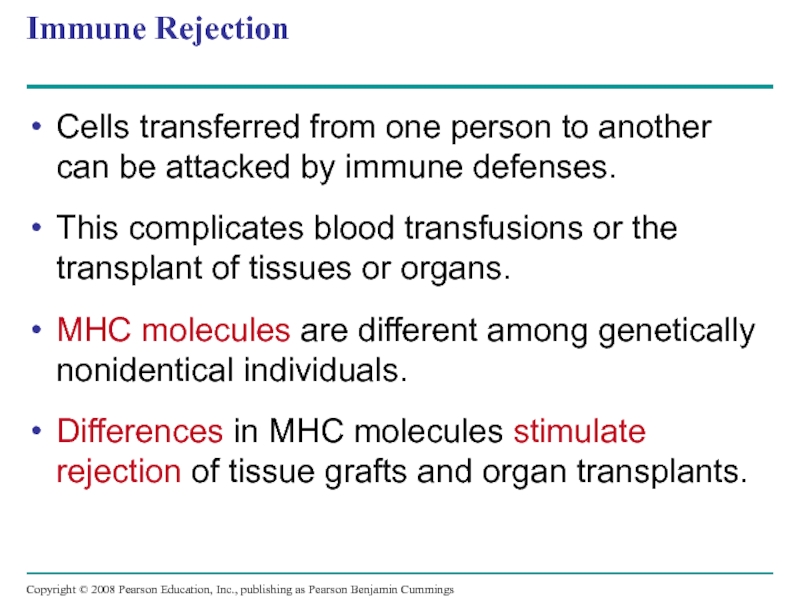
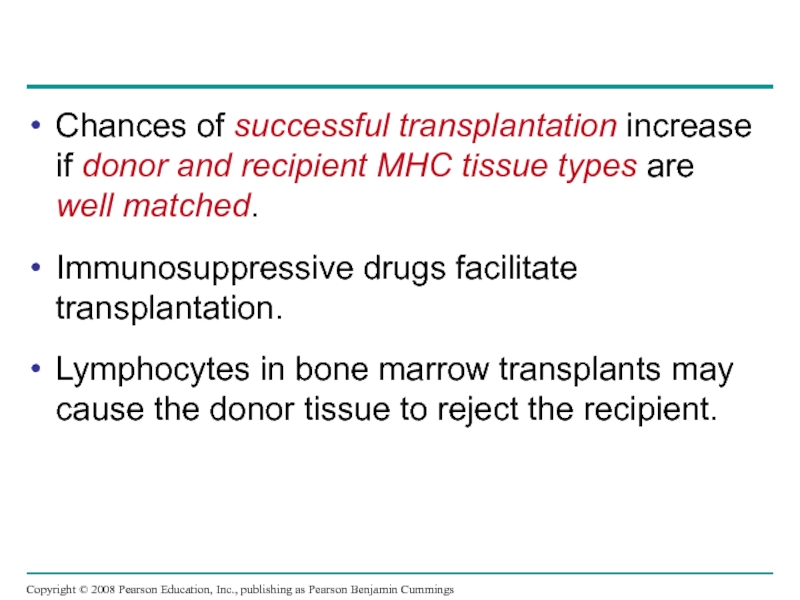

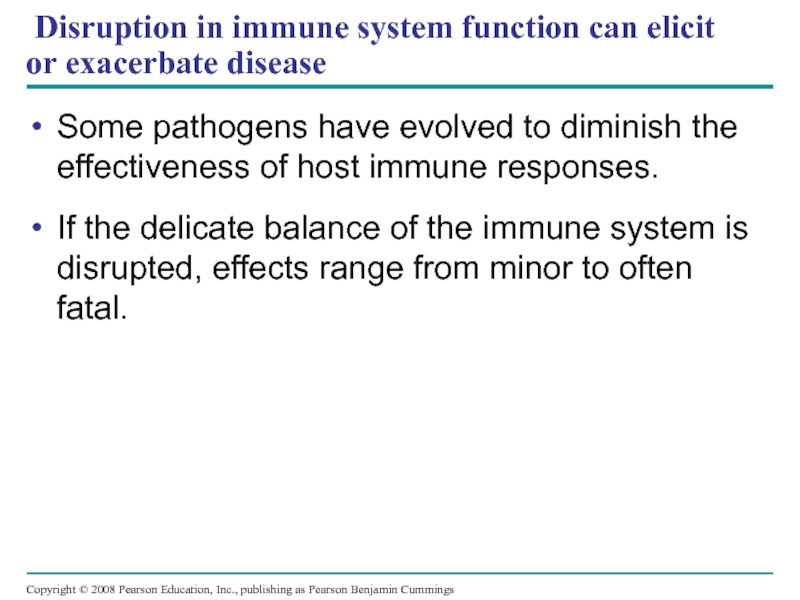
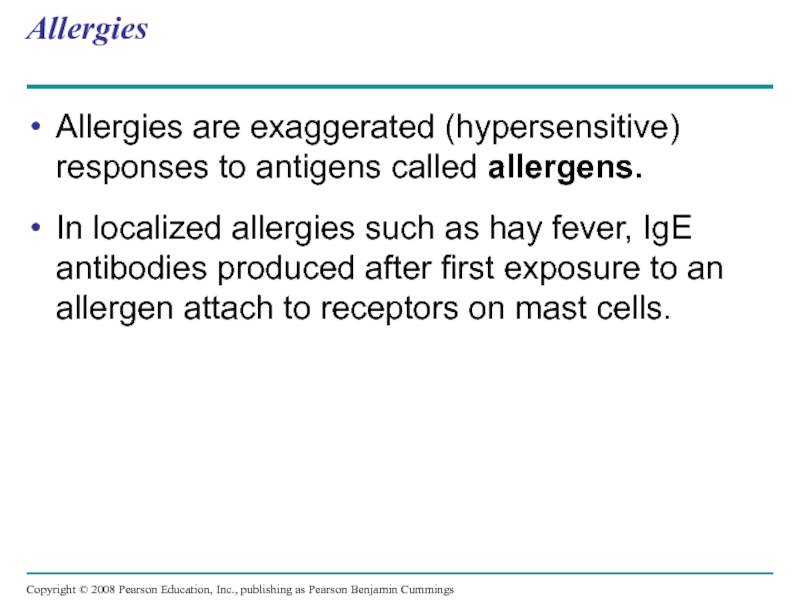
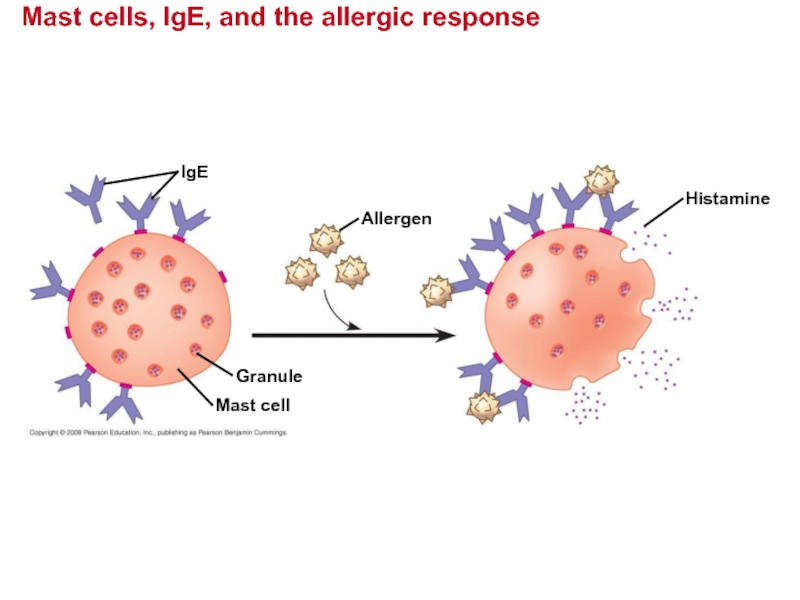
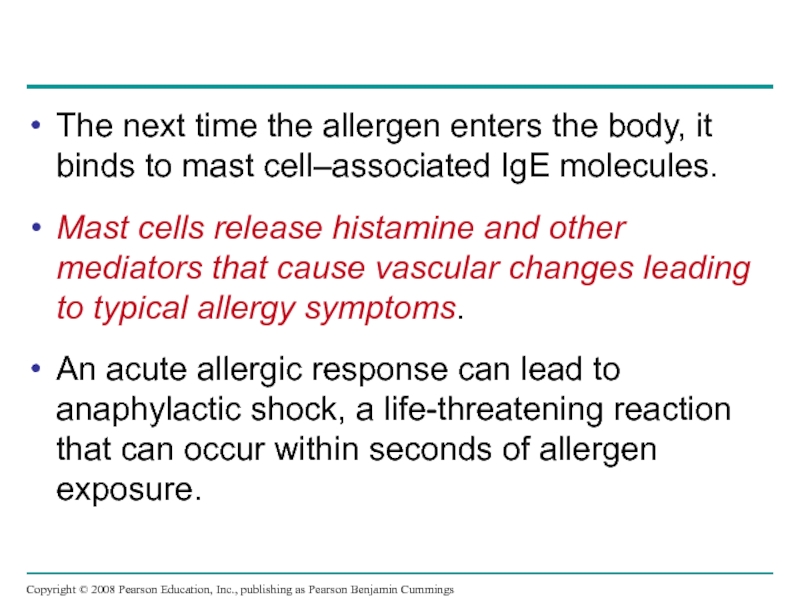
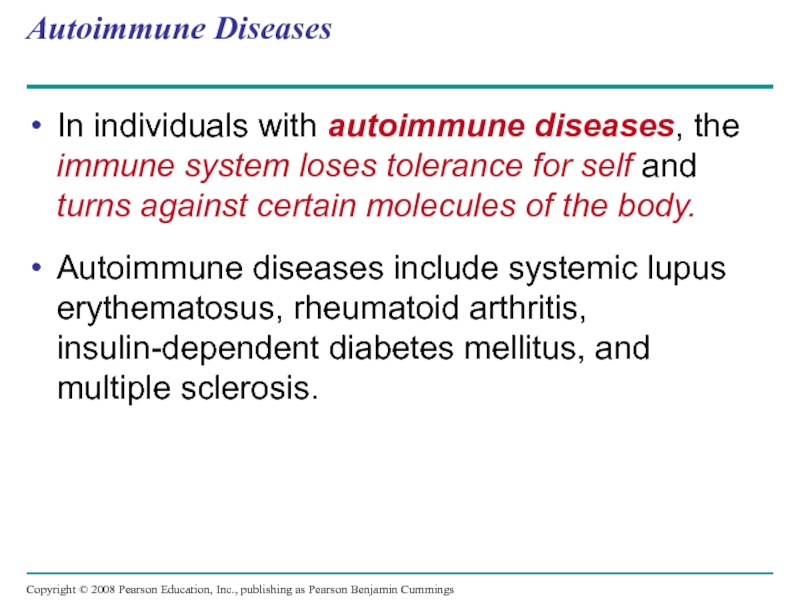
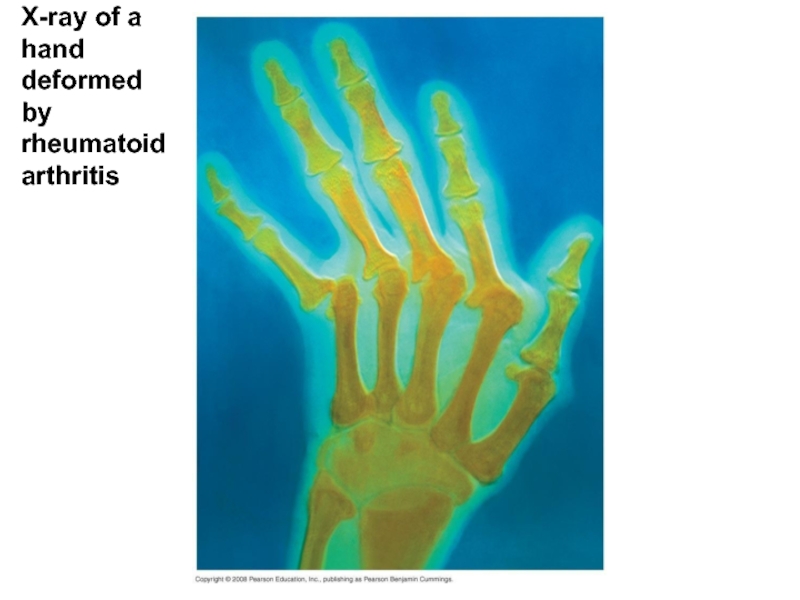
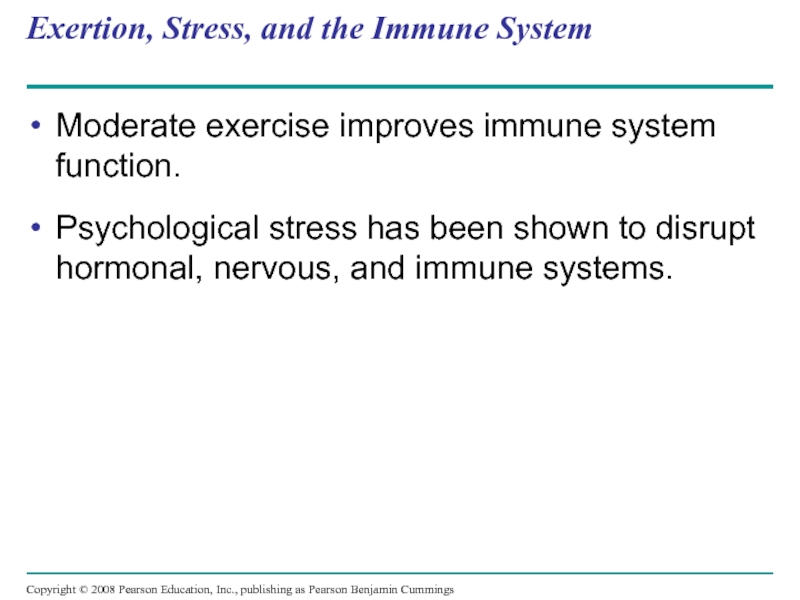
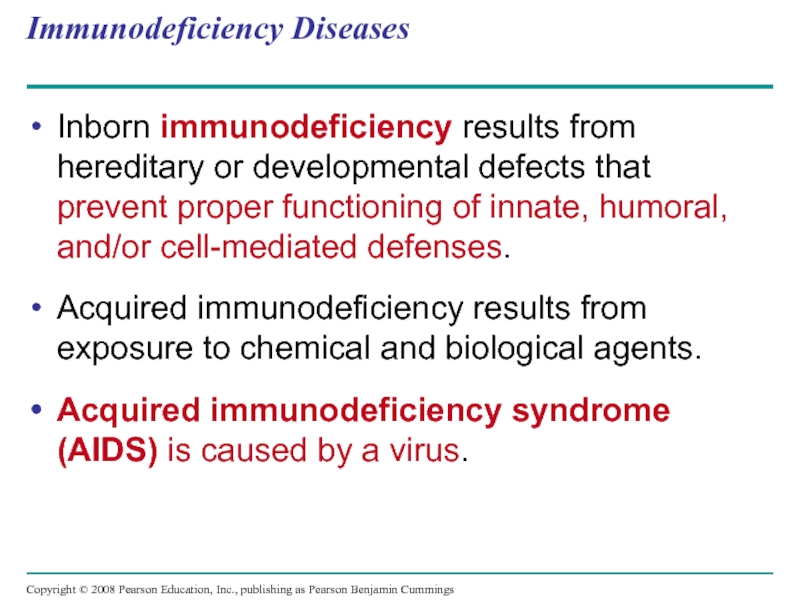
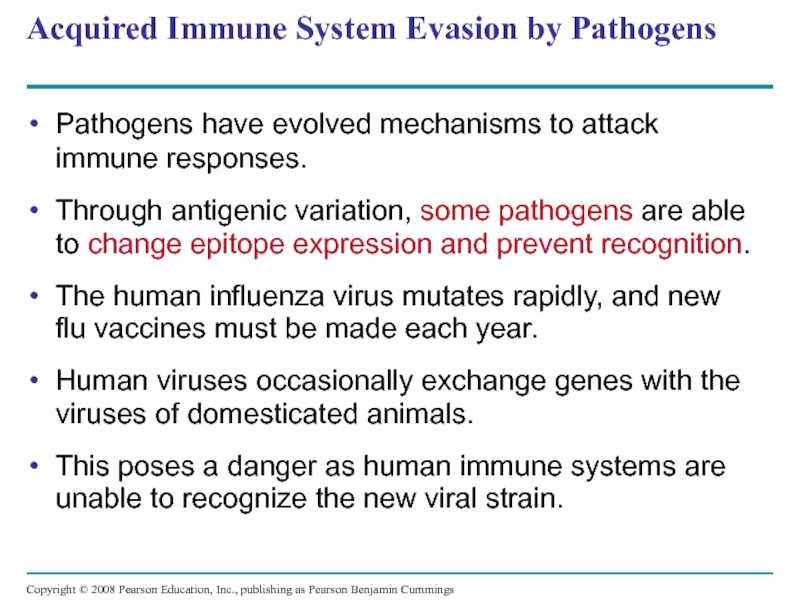
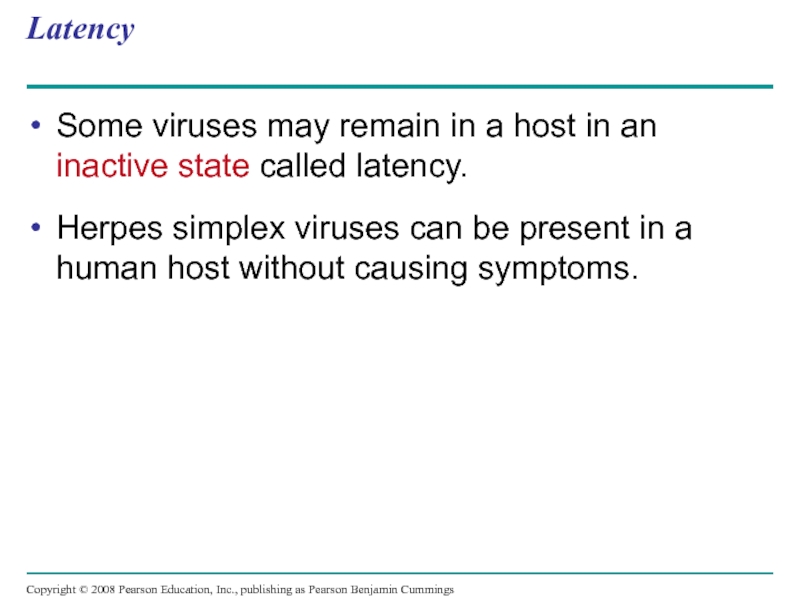
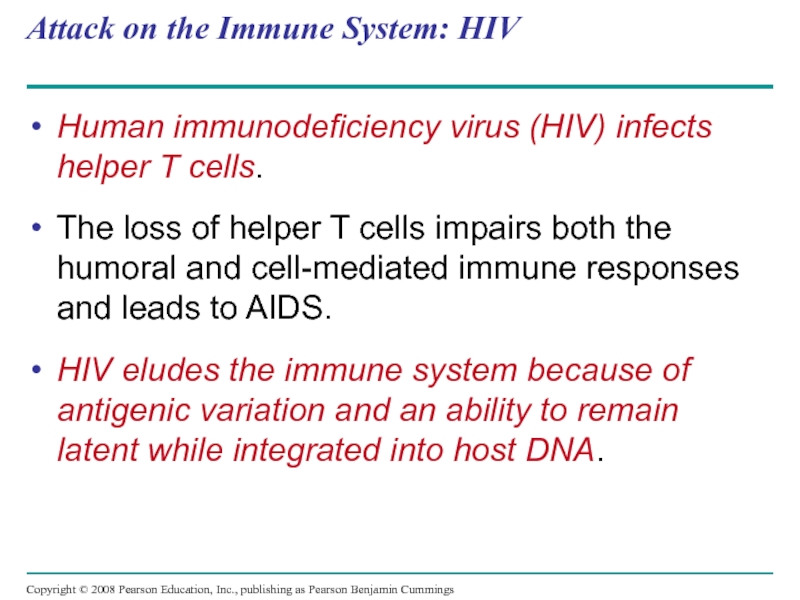
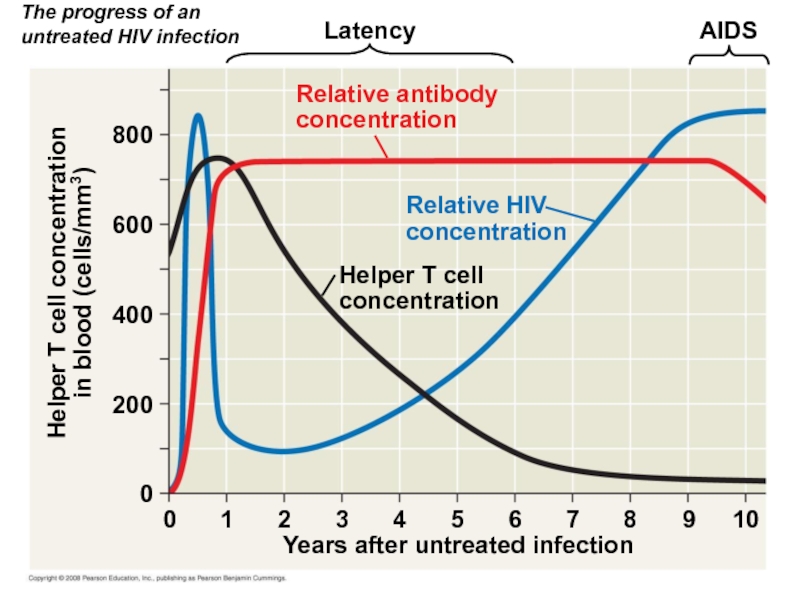
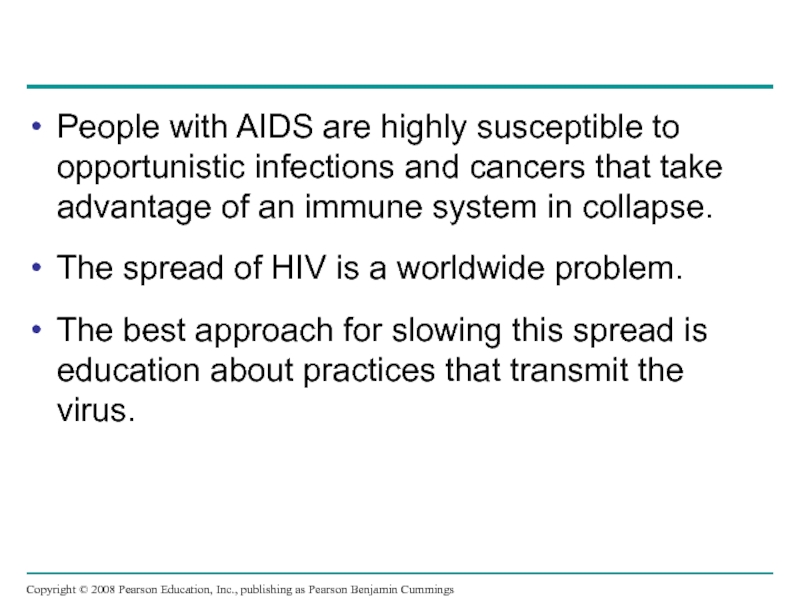
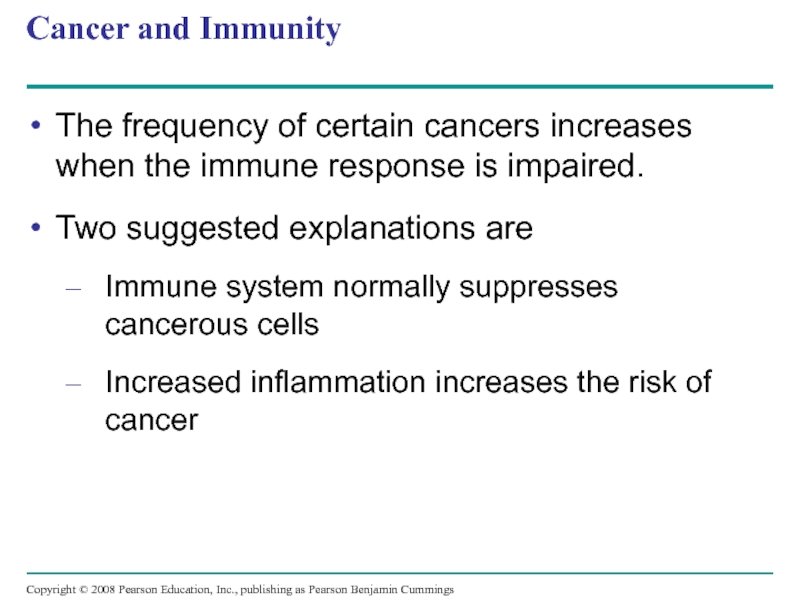
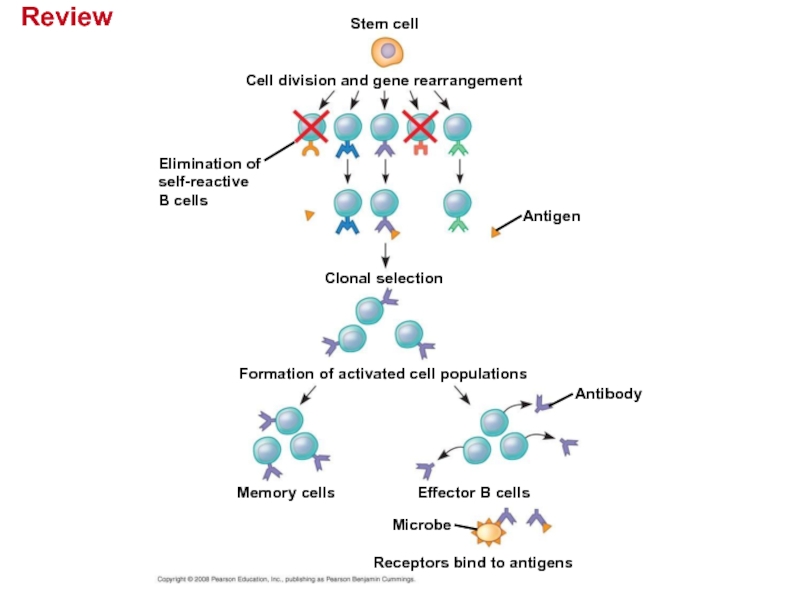
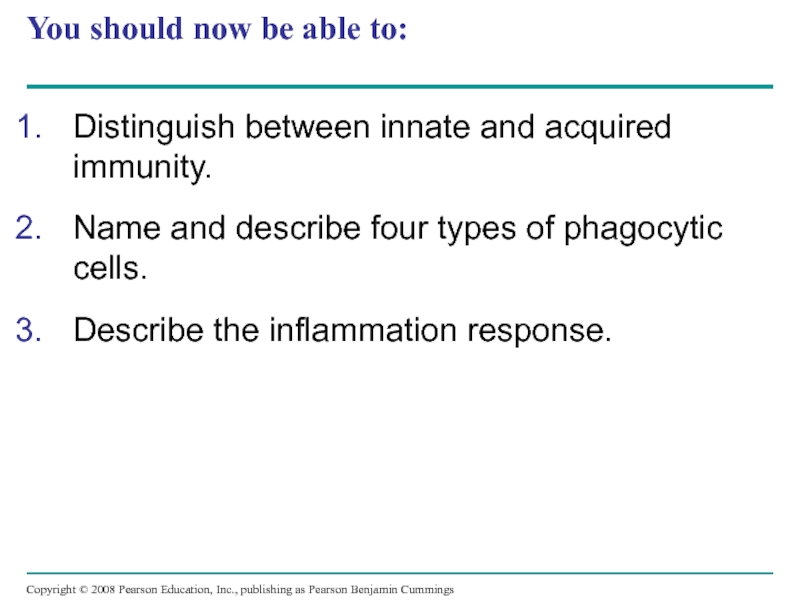
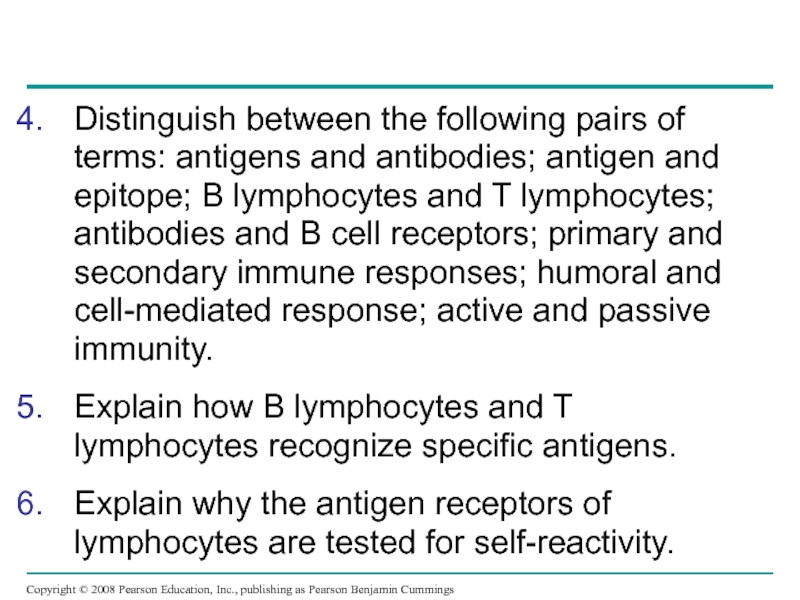
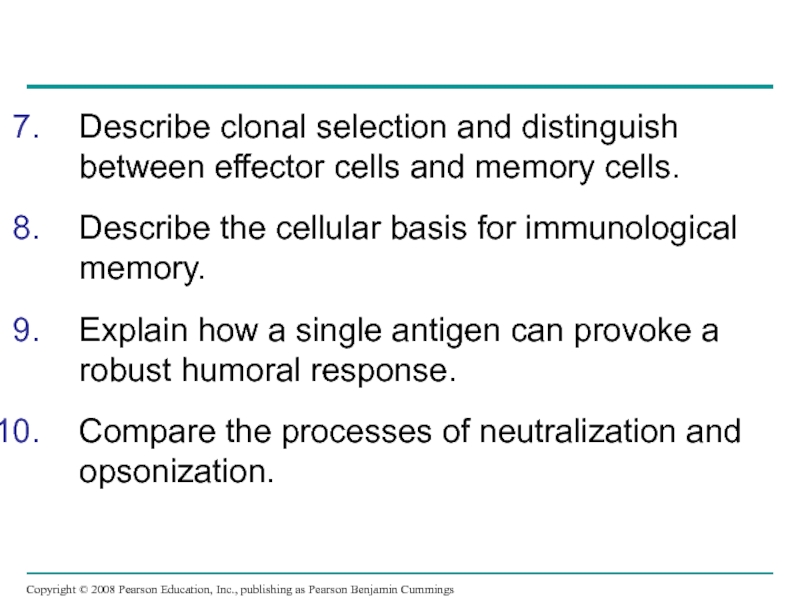
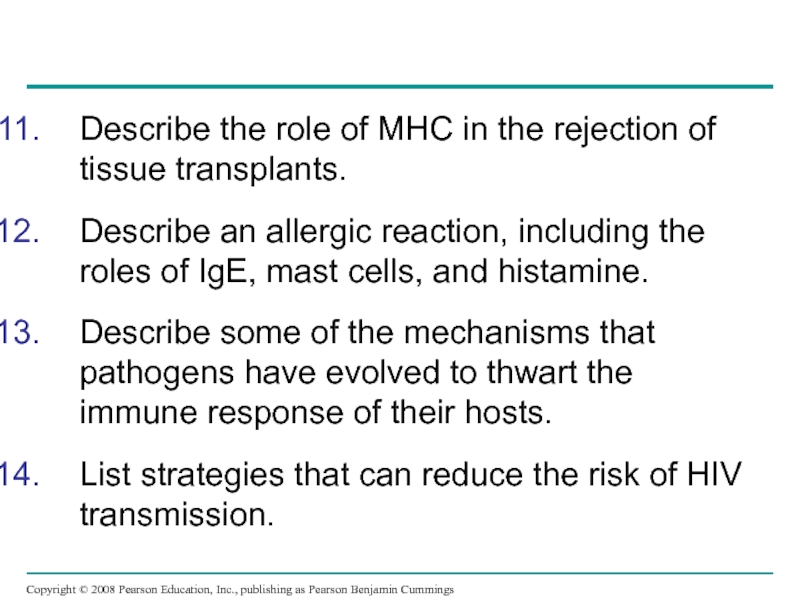
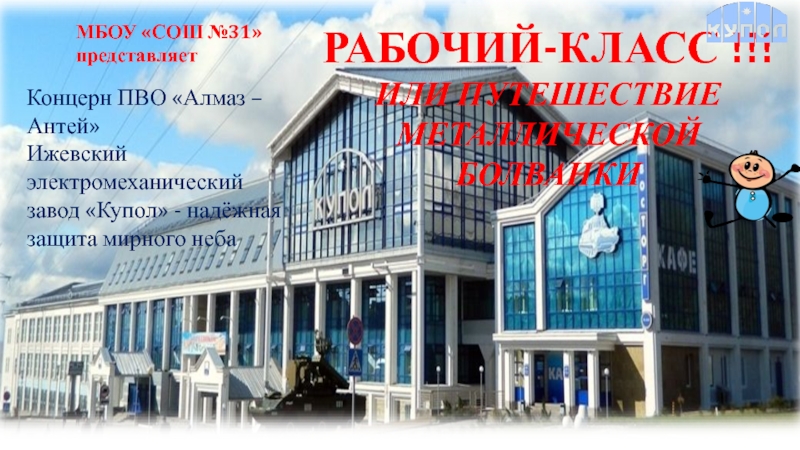
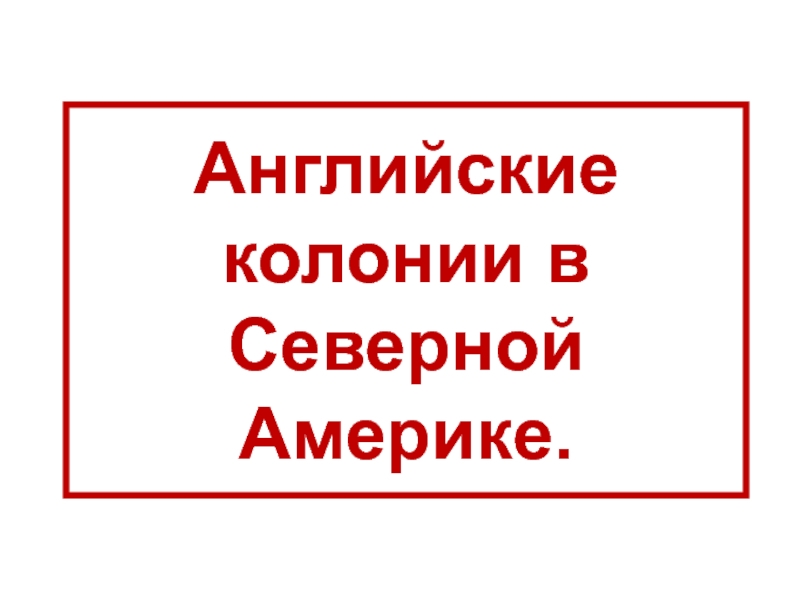

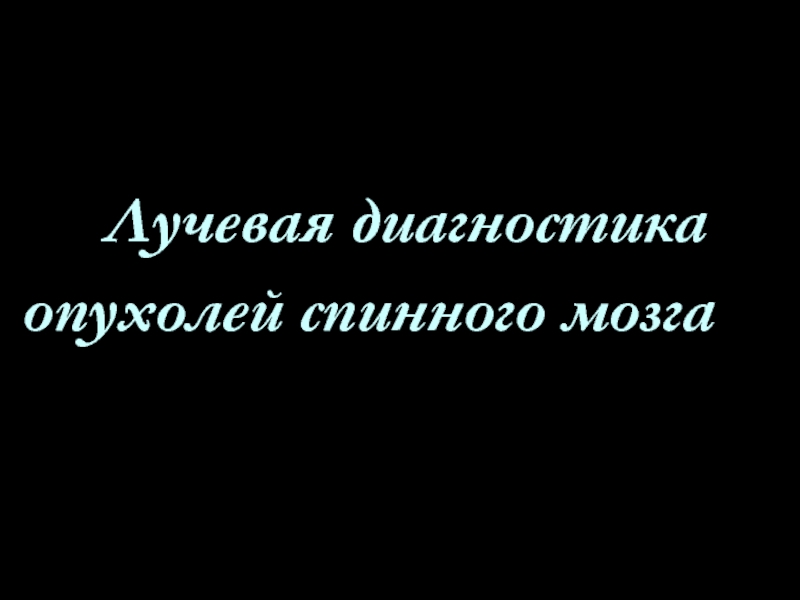
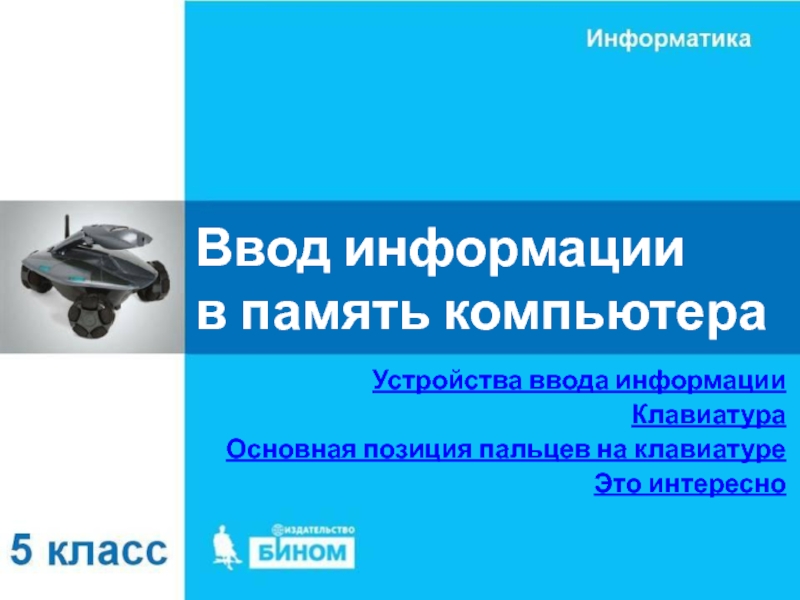



![[Медкниги]За или Против гемотрансфузии](/img/thumbs/10d8e182bc96b4ea48b1839a30d57b5a-800x.jpg)
